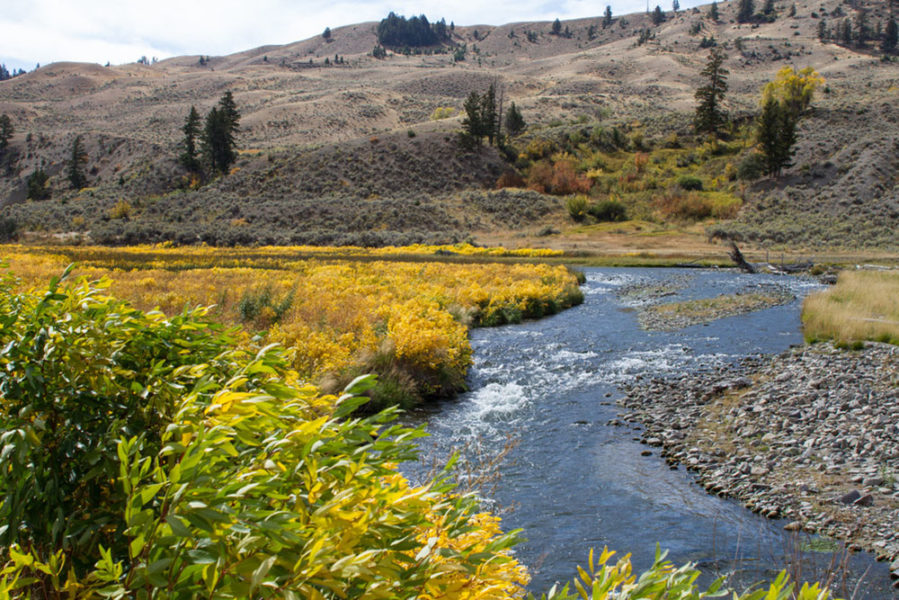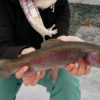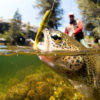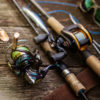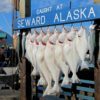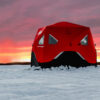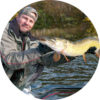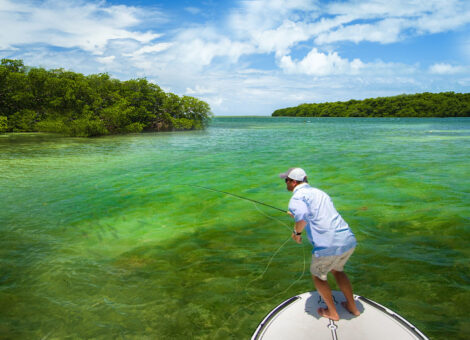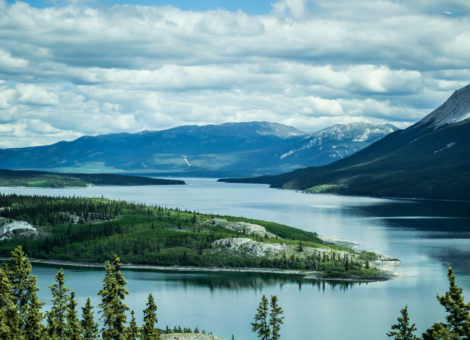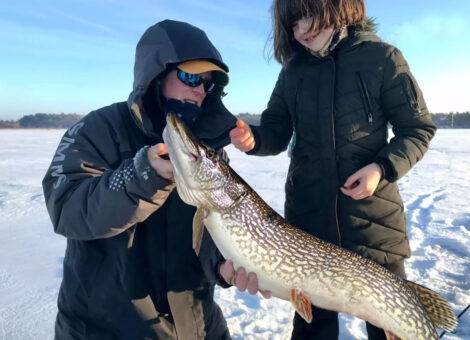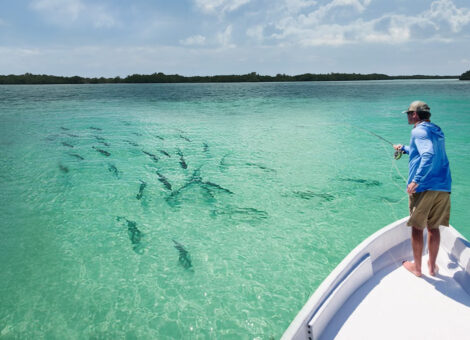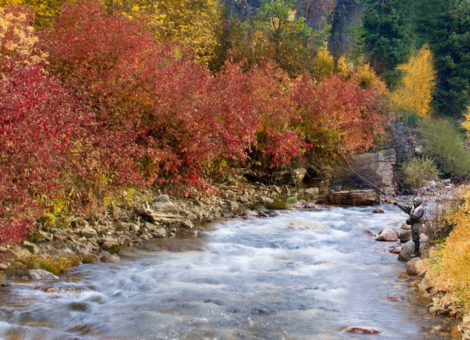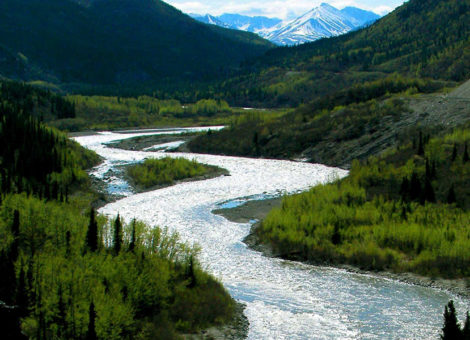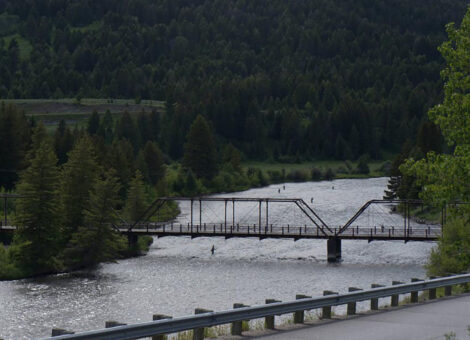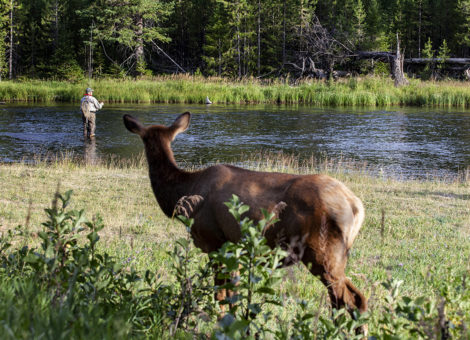Yellowstone Park is home to several of the top trout fisheries in the world. Each year thousands of anglers from far and wide travel to Yellowstone to be in the great outdoors, wet their line, and have a fishing experience like none other.
Below I’ve listed the top 50 fishing lakes, rivers and streams in Yellowstone National Park. To the right of each body of water, I’ve listed the primary gamefish you’ll find in each river or lake. To learn more about a fishing spot, click on the name listed in the left column.
| River, Lake or Stream | Fish Species |
|---|---|
| 1. Yellowstone Lake | Yellowstone Cutthroat Trout, Lake Trout, Longnose Sucker |
| 2. Yellowstone River | Yellowstone Cutthroat Trout, Cutbow, Brown Trout, Rainbow Trout, Rainbow-Cutthroat Hybrids, Arctic Graylings, Mountain Whitefish |
| 3. Shoshone Lake | Lake Trout, Brown Trout, Utah Chub, Brook Trout |
| 4. Shoshone River | Yellowstone Cutthroat Trout, Rainbow Trout, Brook Trout, Brown Trout, Cuttbows, Mountain Whitefish |
| 5. Lewis Lake | Brook Trout, Brown Trout, Cutthroat Trout, Lake Trout |
| 6. Lewis River | Brown Trout, Brook Trout, Lake Trout, Mountain Whitefish |
| 7. Heart Lake | Lake Trout, Cutthroat Trout, Mountain Whitefish, Utah Chub, Utah Sucker |
| 8. Cascade Lake | Yellowstone Cutthroat Trout, Arctic Grayling |
| 9. Trout Lake | Cutthroat Trout, Rainbow Trout, Cutthroat-rainbow Trout Hybrids |
| 10. Grebe Lake | Westslope Cutthroat Trout, Arctic Grayling |
| 11. Hebgen Lake | Brown Trout, Westslope Cuttroat Trout, Rainbow Trout, Mountain Whitefish |
| 12. Wolf Lake | Arctic Grayling, Westslope Cutthroat Trout |
| 13. Gibbon River | Yellowstone Cutthroat Trout, Rainbow Trout, Cutbow, Brown Trout, Mountain Whitefish, Arctic Grayling, Longnose Sucker |
| 14. Lamar River | Yellowstone Cutthroat Trout, Rainbow Trout, Cutbow, Mountain Whitefish, Longnose Sucker |
| 15. Snake River | Yellowstone Cutthroat Trout, Snake River fine-spotted cutthroat trout, Mountain Whitefish, Utah Chub, Utah Sucker, Mottled Sculpin |
| 16. Falls River | Yellowstone Cutthroat Trout, Rainbow Trout, Mottle Sculpin |
| 17. East Fork Specimen Creek | Westslope Cutthroat Trout |
| 18. Grayling Creek | Westslope Cutthroat Trout |
| 19. Madison River | Brown Trout, Rainbow Trout, Westslope cutthroat trout, Arctic Grayling, Mountain Whitefish |
| 20. Firehole River | Brook Trout, Brown Trout, Rainbow Trout, Arctic Grayling |
| 21. Little Firehole River | Brown Trout, Rainbow Trout, Brook Trout, Cutthroat Trout |
| 22. Gardner River | Brown Trout, Brook Trout, Rainbow Trout, Cutbow Mountain Whitefish, Longnose Sucker |
| 23. Middle Creek | Cutthroat, Brook Trout, Brown Trout |
| 24. Slough Creek | Cutthroat, Rainbow Trout, Cutbow, Longnose Sucker |
| 25. Gallatin River | Brown Trout, Cutbow, Westslope Cutthroat Trout, Rainbow Trout, Mountain Whitefish, Mottled Sculpin |
| 26. Sentinel Creek | Brook Trout |
| 27. Iron Spring Creek | Brook Trout |
| 28. Beartooth Lake | Brook Trout, Rainbow Trout, Cutthroat Trout, Arctic Graylings |
| 29. Lily Lake | Rainbow Trout, Arctic Graylings |
| 30. Bechler River | Rainbow Trout |
| 31. Nez Perce Creek | Brown Trout, Rainbow Trout |
| 32. Lava Creek | Brook Trout |
| 33. Tower Creek | Brook Trout, Rainbow Trout |
| 34. Obsidian Creek | Brook Trout |
| 35. Boundary Creek | Cutthroat Trout, Rainbow Trout, Cutbows |
| 36. Delacy CreeK | Brook Trout |
| 37. Beula Lake | Cutthroat Trout |
| 38. Upper Pelican Creek | Cutthrout Trout |
| 39. Broad Creek | Cutthroat Trout |
| 40. Cache Creek | Cutthroat Trout, Rainbow Trout |
| 41. Cottonwood Creek | Cutthroat Trout |
| 42. Hellroaring Creek | Cutthroat Trout, Rainbow Trout |
| 43. Pebble Creek | Cutthroat Trout, Rainbow Trout |
| 44. Blacktail Deer Creek | Brook Trout, Brown Trout, Rainbow Trout, Mountain Whitefish |
| 45. Duck Creek | Brown Trout, Brook Trout |
| 46. Fan Creek | Brook Trout, Cutthroat Trout, Rainbow Trout |
| 47. Soda Butte Creek | Cutthroat Trout, Rainbow Trout |
Yellowstone Lake
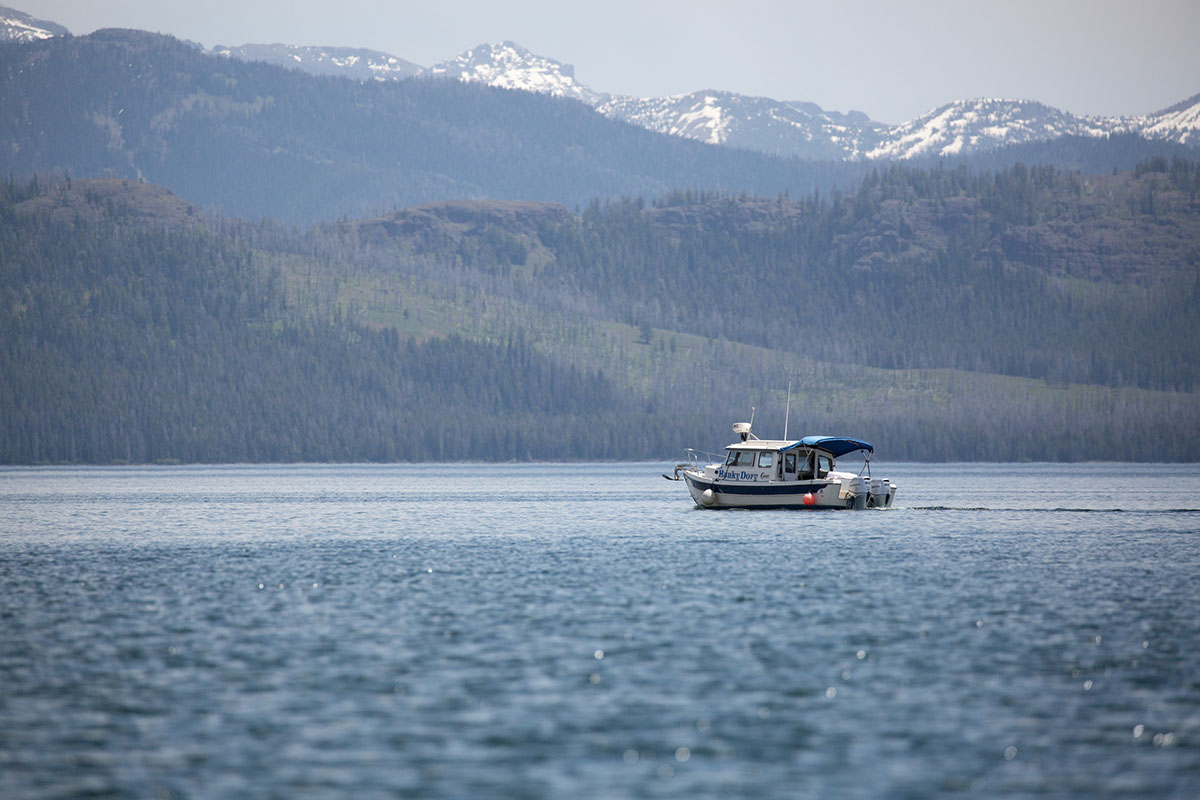
Anglers can still look foward to catching large cutthroats and lake trout throughout Yellowstone Lake. Yellowstone Cutthroats range from 18-22″ and Lake Trout are typically a tad bit larger. While cutthroat populations in Yellowstone Lake aren’t what they once were, there aren’t many other bodies of water in Yellowstone Park where you’ll have the chance to catch a 20″+ cutthroat trout.
Fishing season on Yellowstone Lake opens on June 15. Fishing for cutthroats is best following the start of the season. Lake trout fishing is best during the fall as these trout migrate to the shallows to spawn. When fishing for lake trout during early to mid-summer, anglers should use deep diving lures. During fall, lake trout can be targeted in the shallows using flies.
Using stripping streamers tend to be one of the best methods for targeting larger trout in Yellowstone Lake. In such a large body of water, it’s necessary to cover as much water as possible to get in front of feeding fish. Fishing with streamers makes this possible. Streamers also trigger the predatory instinct of larger cutthroats and lake trout. You’ll want to experiment with different streamer colors, patterns, retrieval speeds and depths.
While trout can be found throughout Yellowstone Lake, there are few sweet spots where you’re sure to get a bite with the right presentation. These include the area south of Bridge Bay and areas around West Thumb where the water is deep just off shore and fish are plentiful.
Yellowstone Lake is also home to the Longnose Sucker fish.
Yellowstone River
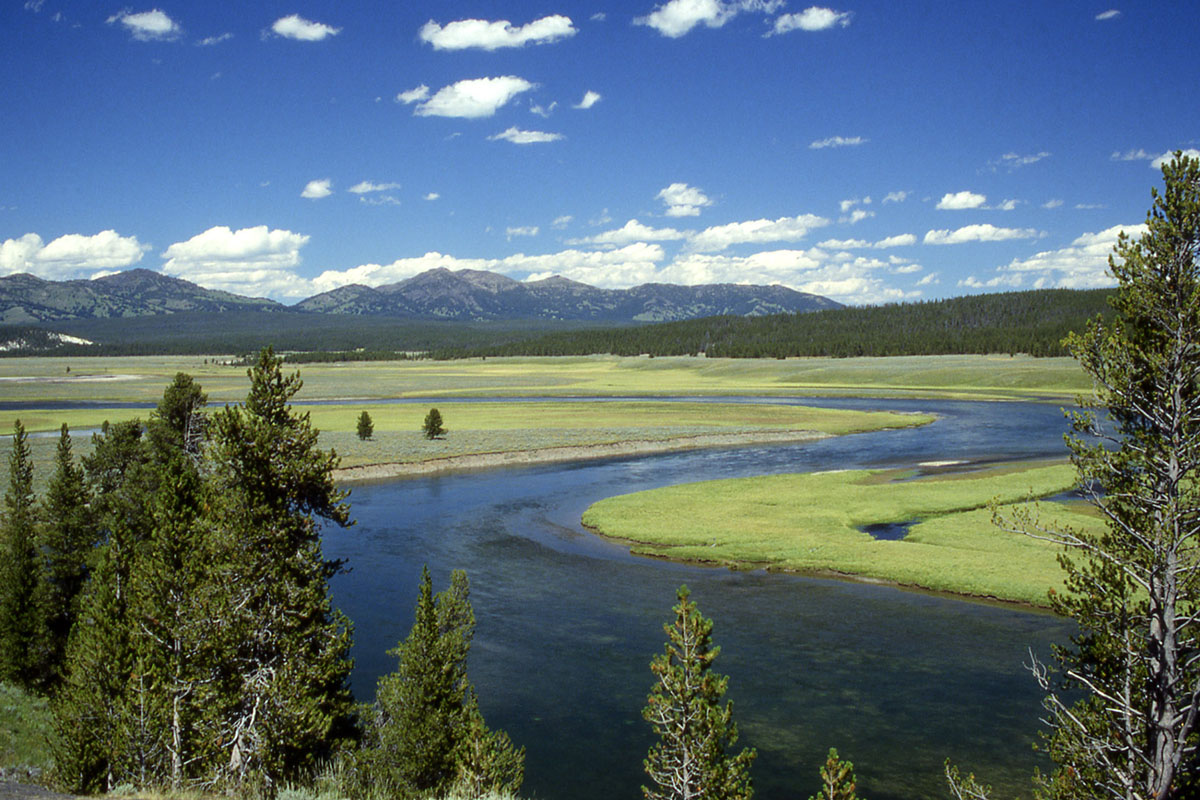
Yellowstone River begins in the Shoshone Moutain Range in Wyoming and enters the Park in the Thorofare region. It then runs for 15 miles until it reaches Yellowstone Lake. This section of the upper Yellowstone River is somewhat remote and can be difficult to access. It’s also home to grizzly bears.
The river exits Yellowstone Lake on the north shore at Fishing Bridge. For several miles below (north) Fishing Bridge the river is permanently closed to fishing, but an ideal section of the river for fish watching. Continuing to Sulphur Caldron fishing is catch-and-release only for Yellowstone Cutthroats. The Yellowstone cutthroat is the only game fish in the river until it reaches the Upper Falls. There are fishing access points to Yellowstone river all along Lake-Canyon Road. If you want to catch trout in the 15 to 17 inch range, try accessing the river from the Buffalo Ford picnic area.
Below Upper Falls to Gardiner Montana, Yellowstone River becomes much less accessible. The easiest point to access along this stretch is Seven Mile Hole which requires a bit of hike to and from the river. Here you’ll find healthy populations of decent size cuttroat trout, brook trout, brown trout, rainbow trout and mountain whitefish.
The Yellowstone River is full of hatches including Green Drakes, Gray Drakes, Pale Morning, Baetis, Flavs and Pink Ladies, among others. For best fishing results, try to match the hatch in the area you’re fishing on any given day.
Shoshone Lake
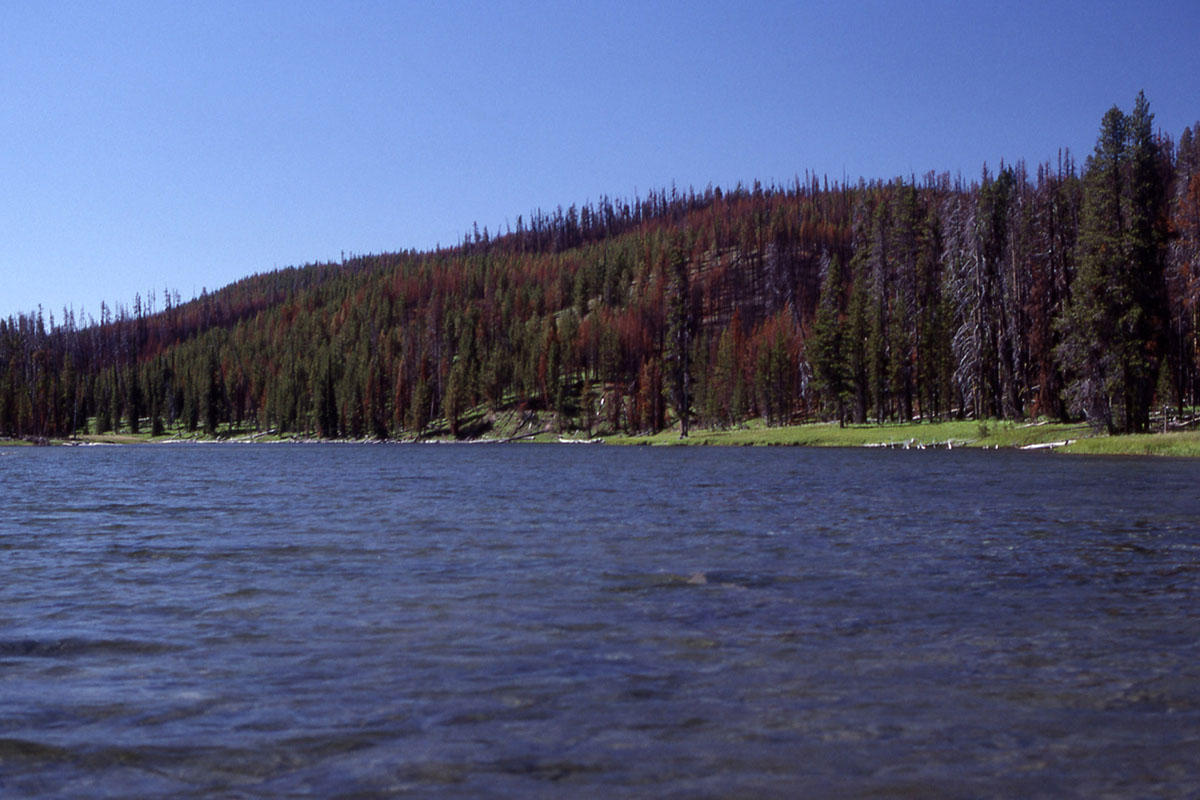
Shoshone Lake offers anglers the opportunity fish for lake trout, brown trout, brook trout and some Yellowstone cutthroats. You’ll find the largest populations of lake and brown trout at the eastern end of the lake among the vegetation and weed beds. The best way to fish Shoshone Lake is by float tube as most of the vegetation and weed beds are about 100 yards out from the shore. Fishing the middle of Shoshone Lake typically yields better results than fishing from shore.
The fishing season ramps up in mid-June and tapers off in in August, as trout begin moving back into deeper waters. During fall as surface activity dwindles, switch to sinking line and leach or baitfish imitation lure.
Shoshone River
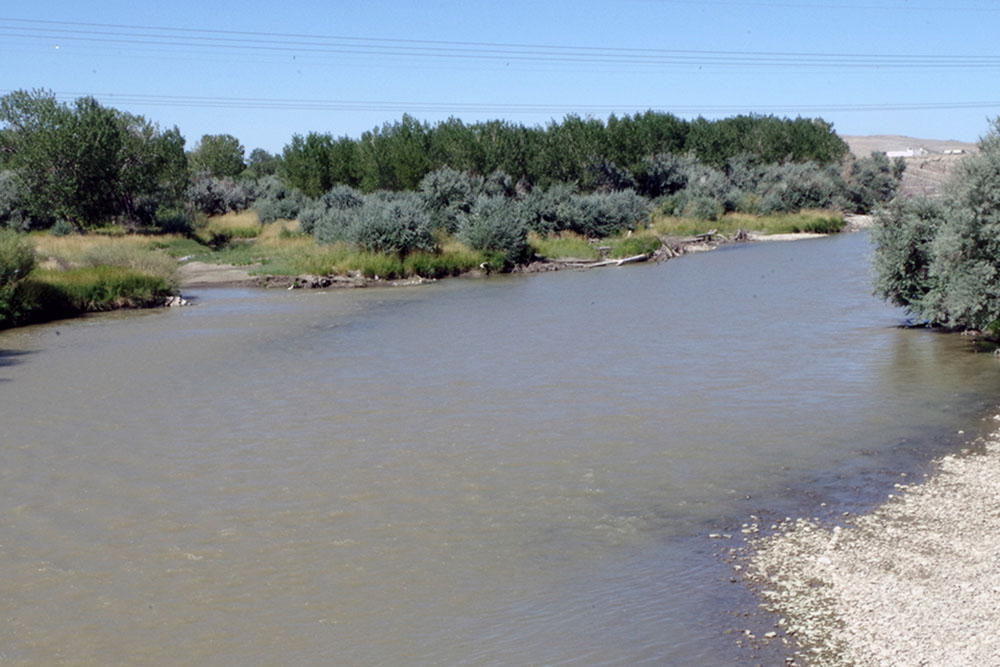
Much of Shoshone River runs through private property but 25 miles of the river in the Shoshone National Forest offers anglers superb fishing access. The best times of year to fish the Shoshone River are April through mid-May, and then mid-July through the end of October. Terrestrial fly patterns including beetles, moths, ants and grasshoppers are ideal for fishing the Shoshone.
The North Fork of the Shoshone River runs along Highway 14/16/20. Just travel west out of Cody, Wyoming on the highway and you can’t miss the river. The Shoshone River is prime bear country so be aware of your surroundings at all times and carry bear spray.
Lewis Lake
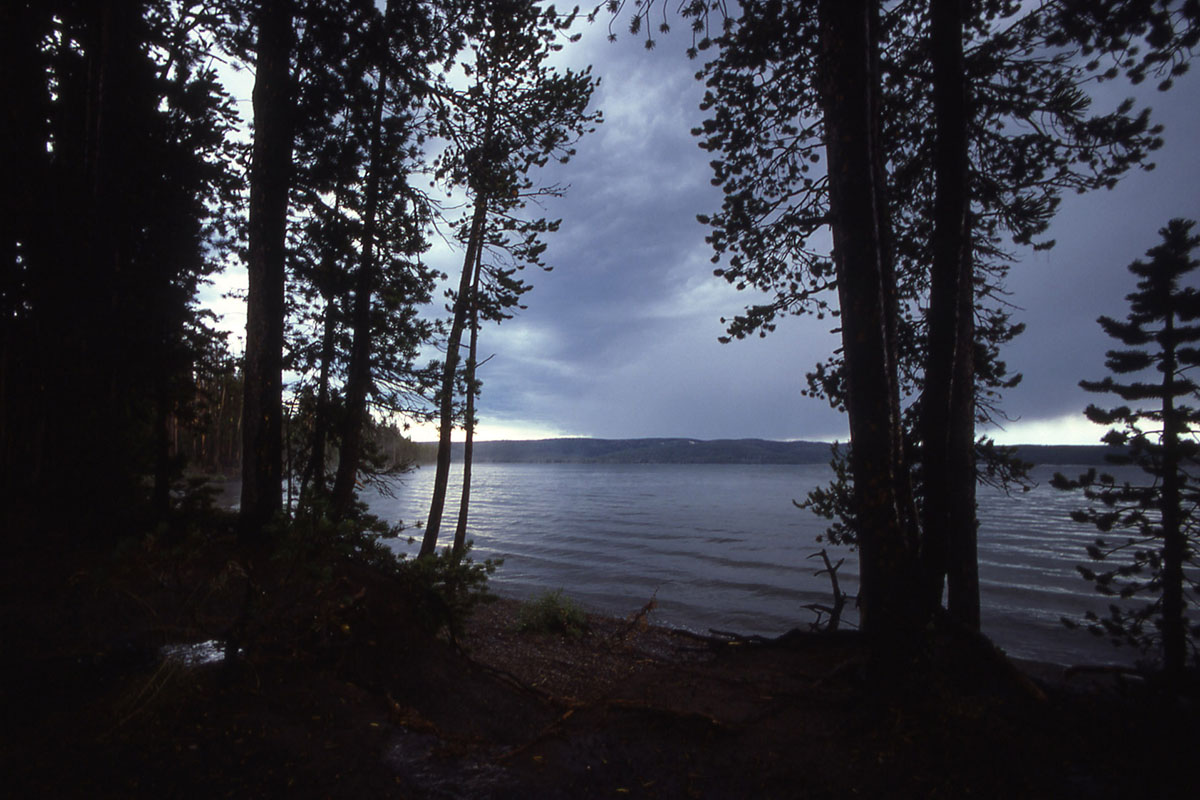
Lewis Lake is third largest lake in Yellowstone Park. The fishing season gets rolling after Memorial Day and runs through late fall. In October, brown and lake trout migrate from Lewis Lake into the Lewis channel and provide the opportunity to catch some spectactular specimens.
Lewis Lake is located just north of the Yellowstone South Entrance approximately half way between the South Entrance and Grant Village. The lake can be accessed via the South Entrance Road.
Lewis River
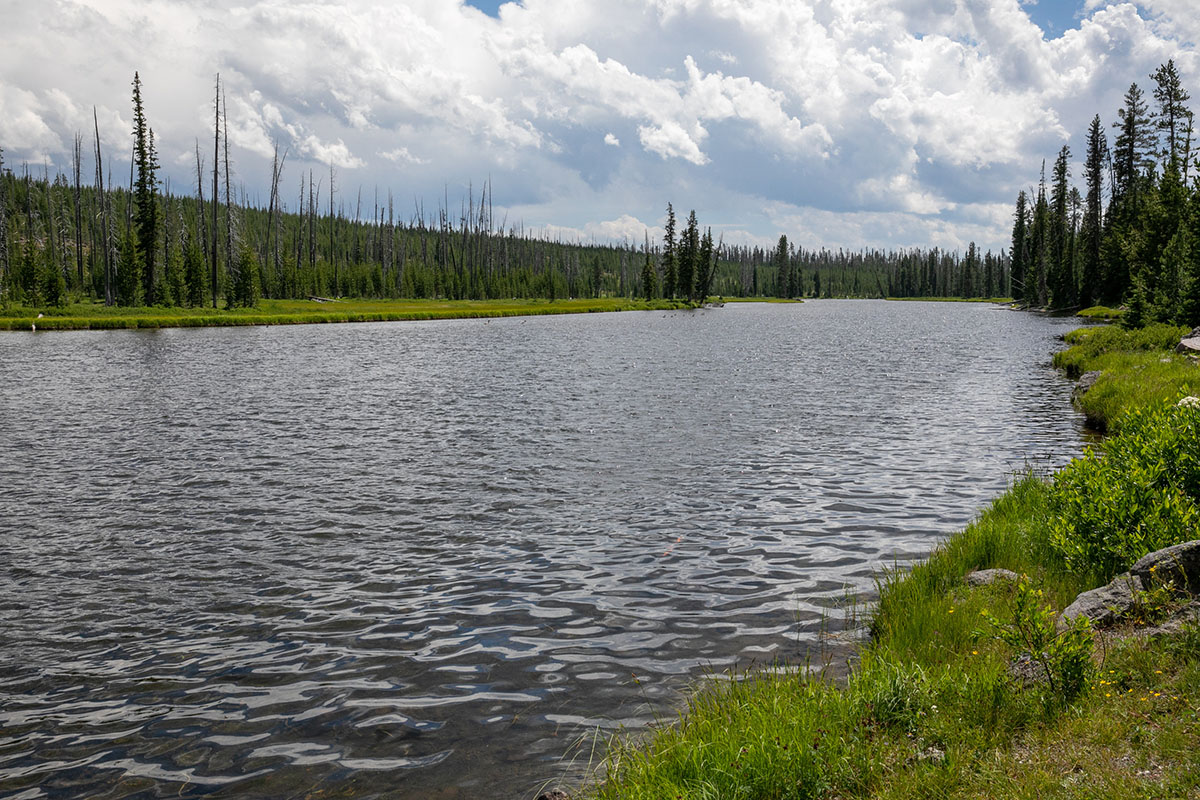
The section of Lewis River between Lewis Lake and Shoshone Lake is one of the more popular sections of the river to fish. During late fall large Brown Trout and Lake Trout move into the Lewis River to spawn. With the right presentation anglers can easily catch fish in the 15″ to 20″ range as trout migrate into the channel. This stretch of the river is accessible via a 3-4 mile hike to the mouth of the river at Lewis Lake and then another 3-4 mile hike to Shoshone. Baitfish patterns and streamers are effective here.
Another hot spot along Lewis River is the meadow stretch just below Lewis Lake. Here the target catch is Brook and Brown Trout. There aren’t a lot of fish in this section of the river but the Browns tend to be a bit larger, and the Brooks a bit smaller. This section of the river is most productive when hatches (Pale Morning Duns, Green Drakes, Blue Winged Olives) are present to draw fish to the surface to feed. Match the hatch and land your fly softly if you want to catch anything here. This stretch is reserved for experienced fly fisherman.
The stretch of Lewis River below Lewis Falls is inhabited primarily by Cutthroat Trout and a few browns. During the fall Browns move into this section of the river from Jackson Lake. On a rare occassion you may even be able to snag a lake trout or mountain whitefish.
Heart Lake
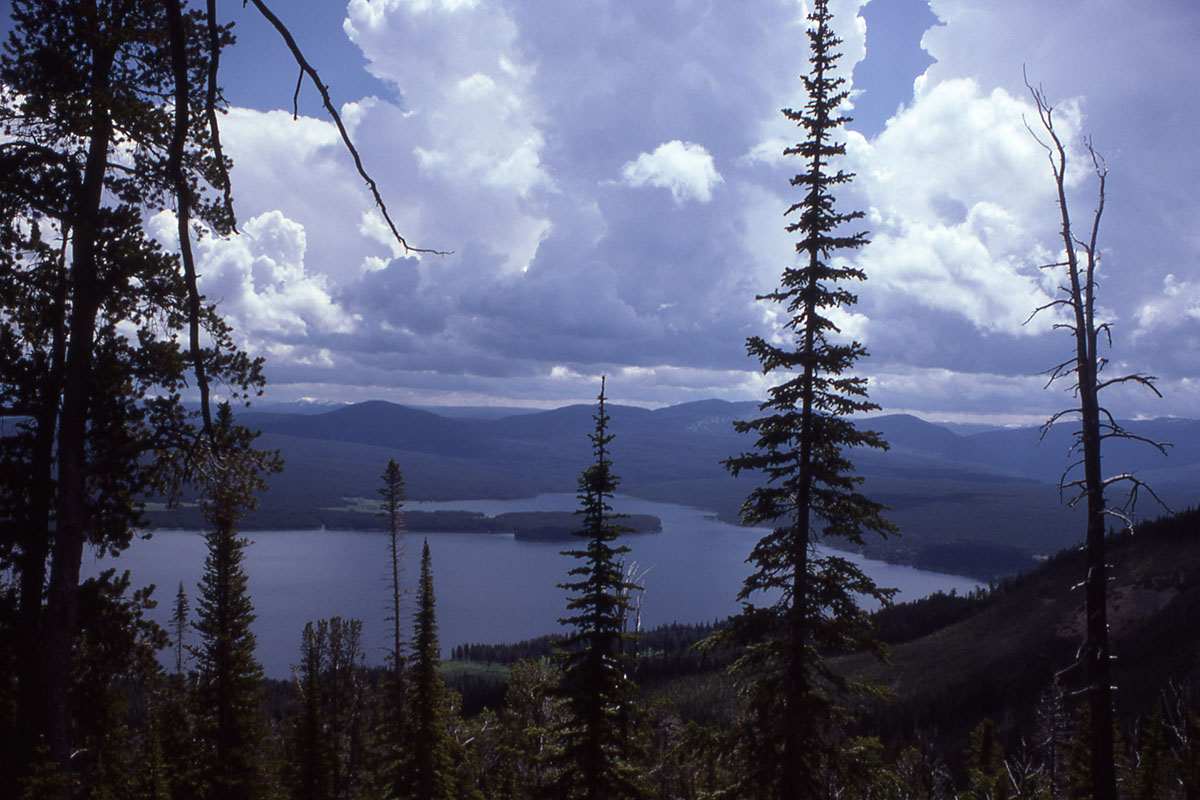
Heart Lake is a unique fishery that provides an excellent fishing experience. Anglers will find lake trout, cutthroat trout, and mountain whitefish throughout the lake. Fishing is restrictured to fly fishing or artificial lures, and their is a strict catch and release policy for cutthroat and mountain whitefish. All lake trout caught can be harvested. The largest lake trout on record in Yellowstone Park was a 42 pound trout pulled from Heart Lake.
Since it is an 8 mile trek to reach Heart Lake, fishing pressure is relatively low as the majority of anglers settle for easier fishing grounds. But for those anglers who make the trek, Heart Lake provides an unforgettable fishing experience. This is also grizzly territory, so bring bear spray and remain aware of your surroundings at all times.
Cascade Lake
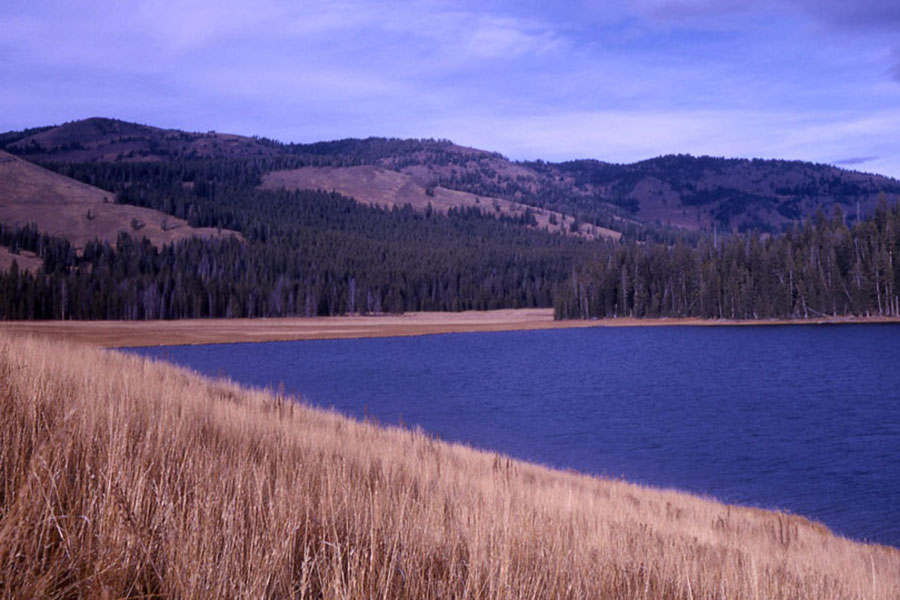
Trout Lake
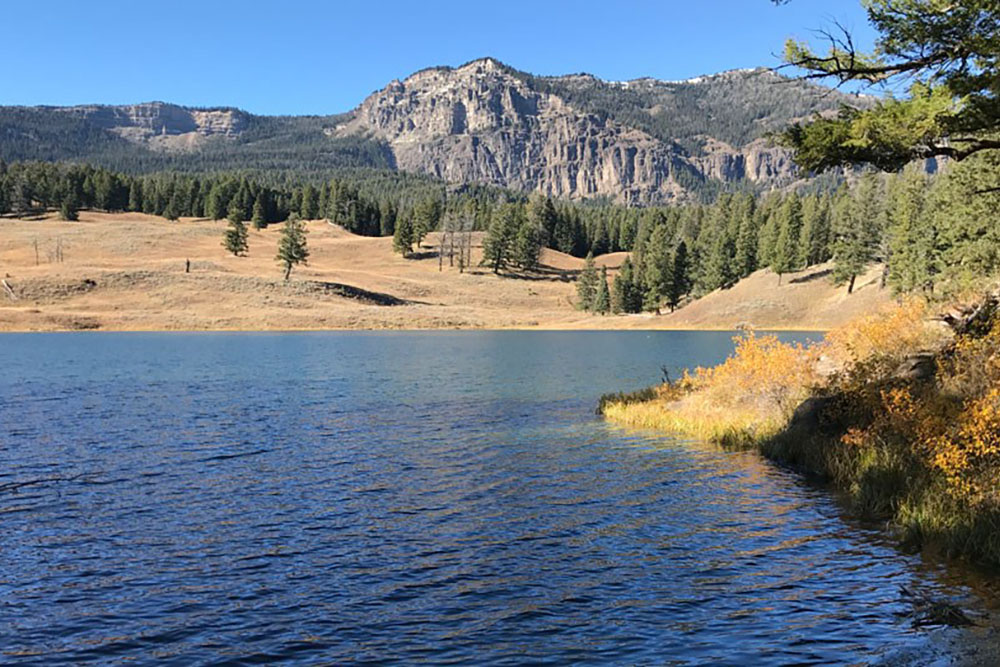
Trout lake is best fished in early summer just after the spring melt and before underwater weed beds take over and make fishing difficult. Since there is an abundance of aquatic insects in the lake for trout to feed on, few of these fish ever feel the need to come to the surface to feed. Hence, subsurface fishing tends to be the most effective method for catching trout. Use sinking lake lines, floating lines with bead head flies, or split shot to get your bait in front of trout feeding just under the surface of the water.
The best method for fishing Trout Lake is sight fishing. Wait for fish to swim by your position and present your fly in the fish’s vicinity. Presenting your fly not to close, yet not too far away from the fish is the key. You can also carefully maneuver around the lake (watching not to step into the lake and stir up mud) until you spot a fish and then try casting. The fish here are finicky feeders, and fishing becomes a bit of a numbers game. You’ll have to get your fly in front of enough fish to get a bite.
Grebe Lake
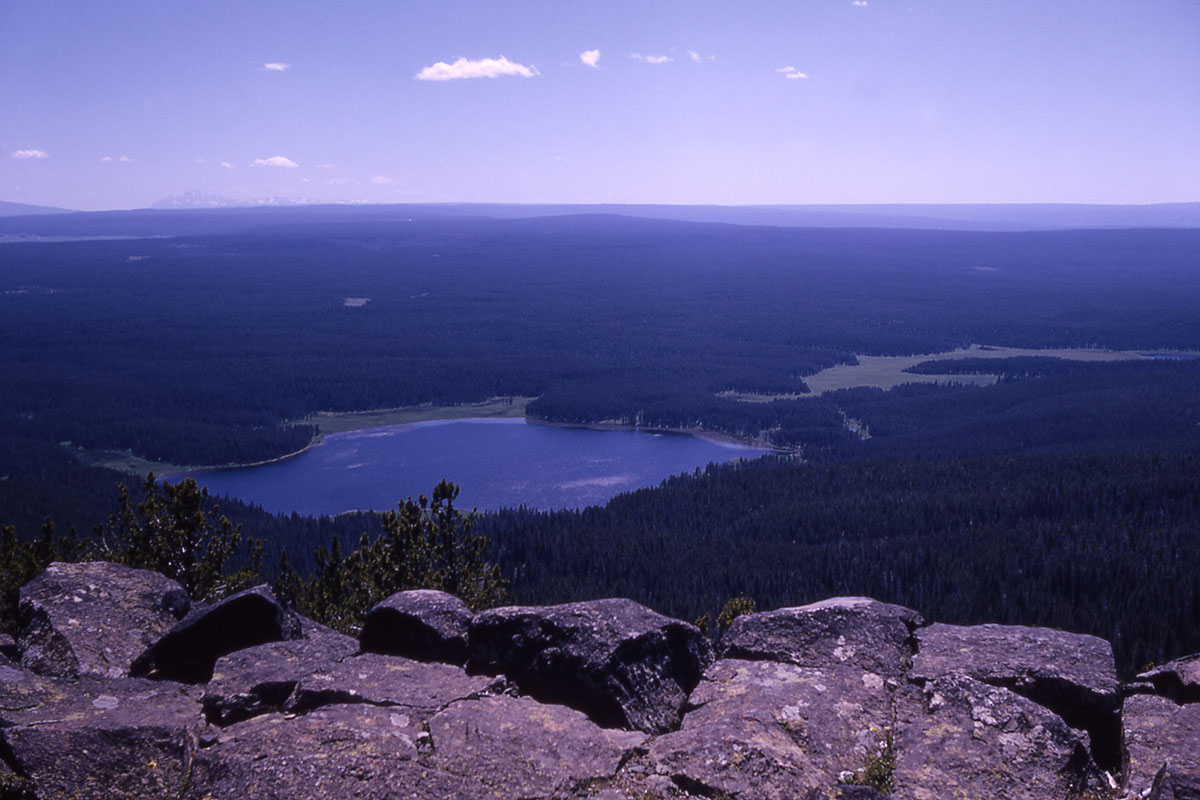
Fishing Grebe Lake from shore is excellent and gets even better if you’re able to wade a little deeper into the water to cast over the shoreline dropoff. If you have the wherewithal to hike in with a float tube or boat, then you can access every part of the lake.
You can reach the south shore of Grebe Lake via a 3-mile trail. Once you arrive at the lake you can walk in either direction. The trailhead is located along the north side of the road between Norris and Canyon (8 miles from Norris and 3 miles from Canyon). The trail can be a bit muddy during early spring.
Fishing subsurface is often most effective using a floating line, split shot or slow sinking fishing line. Allow your line to sink under the surface of the water and slowly retrieve it. Grebe has several annual hatches. Patterns including Damselfly, Nymph, Parachute Adams, Renegades and Griffiths Gnats are all effective. Try fishing the inlets, outlets, and structure.
Hebgen Lake
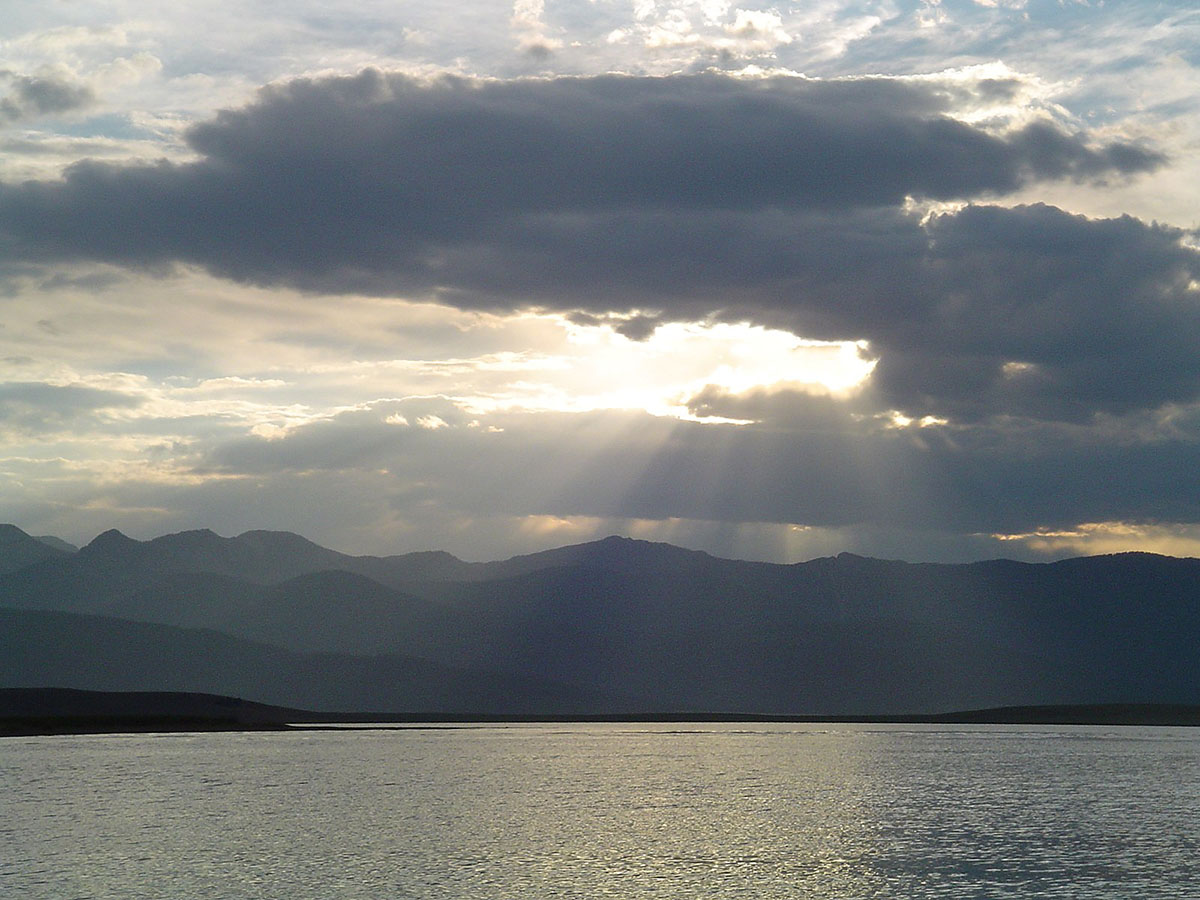
Fishing pressure on Hebgen Lake is high, and it’s no surprise. The lake is home to giant rainbow and brown trout, along with healthy populations of Westslope cutthroats and mountain whitefish. The average length of browns in the lake is 16-18 inches with much larger specimens common. Rainbow trout measure 14-16 inches on average.
Trico hatches in late spring and early summer drive trout to the shallows and to the surface to feed, and provide and provide anglers with excellent fly fishing opportunities. During summer hatches, anglers are able to catch decent size trout right from shore. When fishing Trico hatches I recommend using light gear and tippets with longer leader line. During late summer caddisfly hatches, heavier gear and tippets works well, along with standard dry fly patterns.
Hebgen Lake has a lot of great spots to fish, but one of my favorite spots for dry fly fishing is the Madison Arm of Hebgen Lake.
Wolf Lake
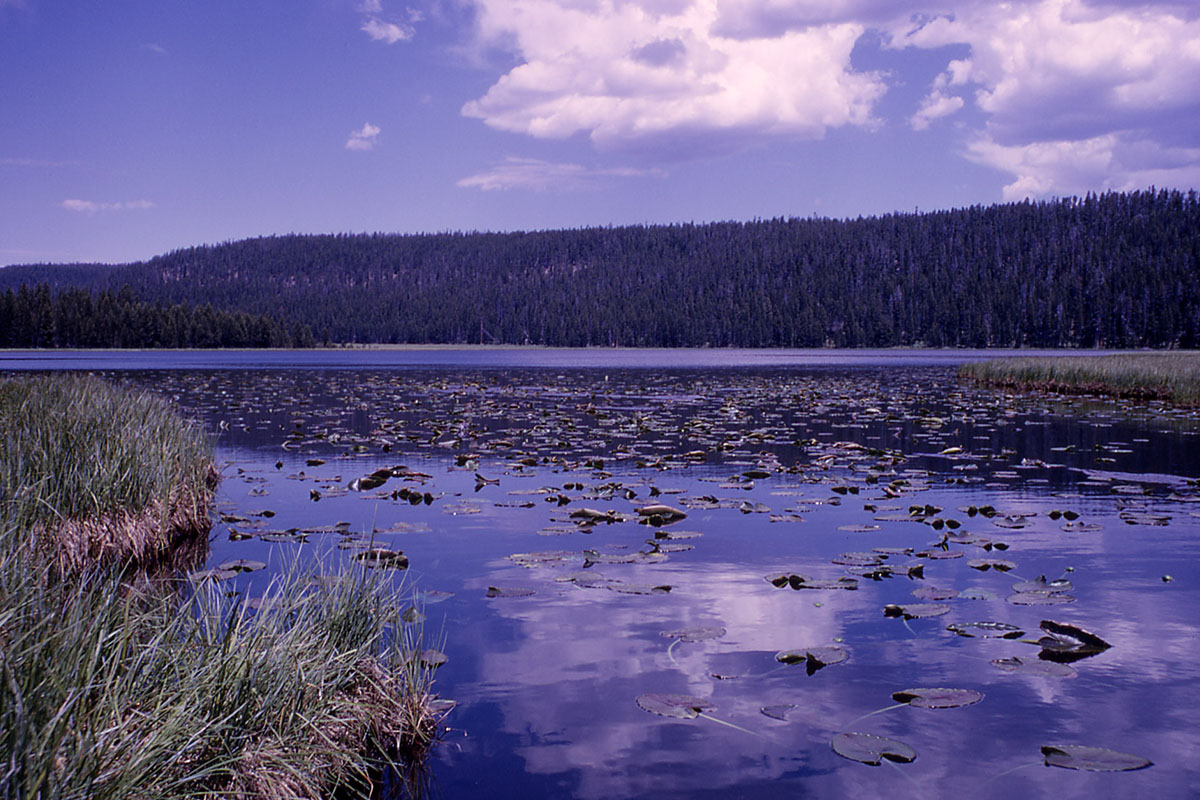
Gibbon River
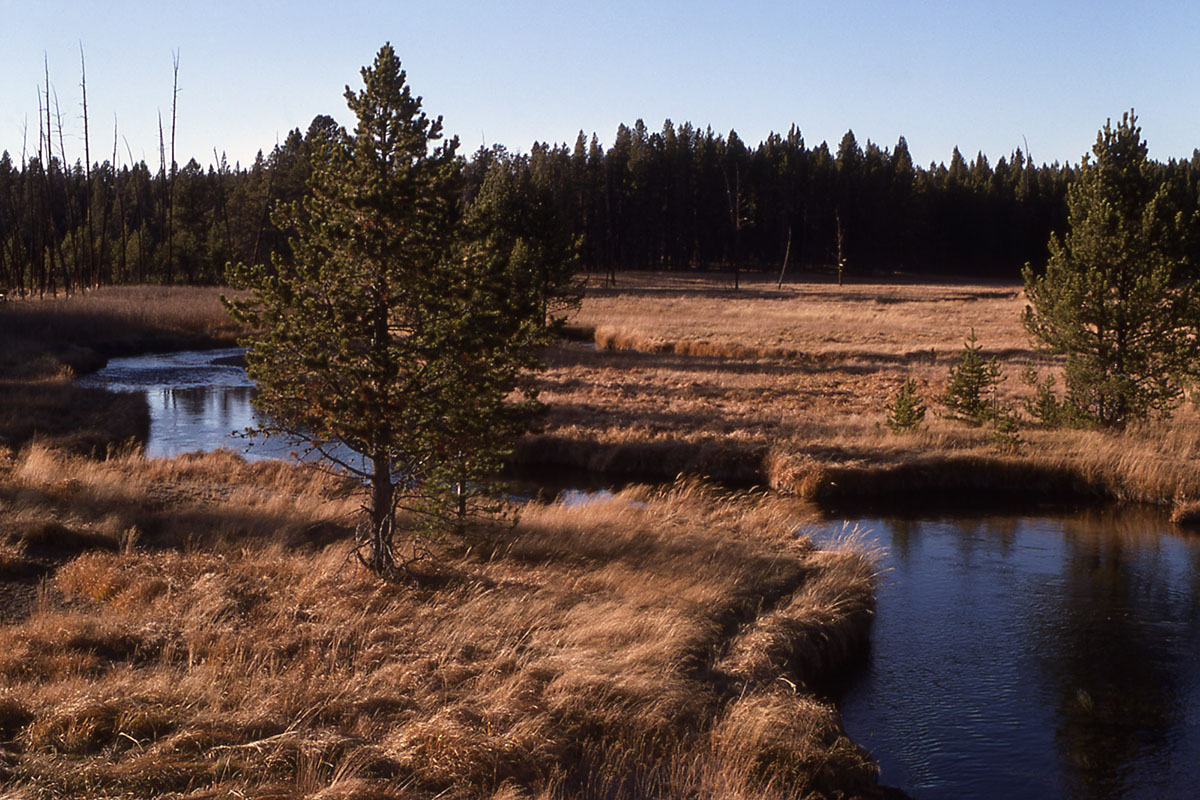
At the lower end of Virginia Meadows is a popular picnic area that is accessible from the Virginia Cascades Road entrance 2 miles downstream from the meadows. This stretch of river next to the picnic area is full of brooks, browns, rainbows, grayling and the occassional moutain whitefish. I recommend using a high-floating dry fly here as the banks have ample cover to maneuver.
Continuing downstream as Gibbon River crosses Norris Junction the river becomes noticeably larger. Here brown trout are rainbows are less common and browns take over. As the river approaches Elk Park, it becomes more nutrient rich and their is increased insect life. Browns are still the target fish but it requires a skilled angler to catch them.
Downstream from Elk Park, and just upstream from Gibbon Meadows the river reaches Gibbon picnic area. This area can also be challenging to fish. If you don’t see the fish feeding, focus on the shadows along he banks. From Gibbon picnic area downstream to Gibbon Falls attractor flies are effective for targeting the larger browns and rainbows that inhabit this stretch of the river. You’ll also snag an occassional brook trout and grayling here and there.
Every October, downstream from Gibbon Falls all the way to Firehole River you’ll find an influx of browns and rainbows entering the river from Hebgen Lake to spawn. These fall runs of brown and rainbow trout attract anglers from far and wide. Notwithstanding, fishing pressure usually doesn’t reach extreme levels.
Lamar River
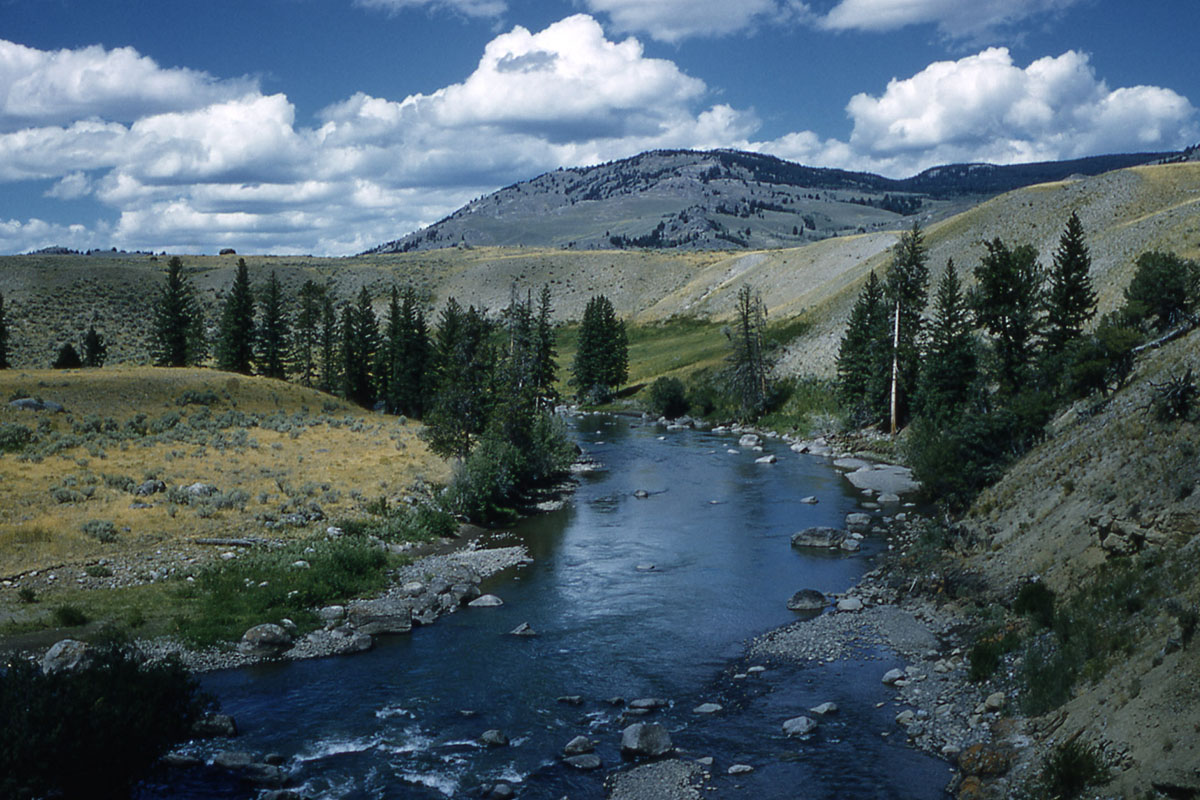
Fishing along Lamar River can be spotty. Runs come and go overnight. Where there was great fishing one day, the next there’s not a bite. You sometimes have to cover a lot of water to find the spots where the fish are located. Lamar River has a late snow melt and fishing doesn’t really get going until late July or early August. Lamar is primarily an attractor-fly and terrestial insect stream, but there are a few hatches here and there, such as the late summer Green Drake hatch.
Late-summer terrestial fishing is the biggest draw for anglers to Lamar River. The terrestial insects are huge and you should bring flys to match. Meadows along the banks produce large beetles, grasshoppers and Mormon crickets. Along the lower expanse of the river near the Lamar River Bridge and Cooke City Highway, Golden Stonefly nymphs, sculpin patterns, large attractors and terrestials always perform well.
Snake River
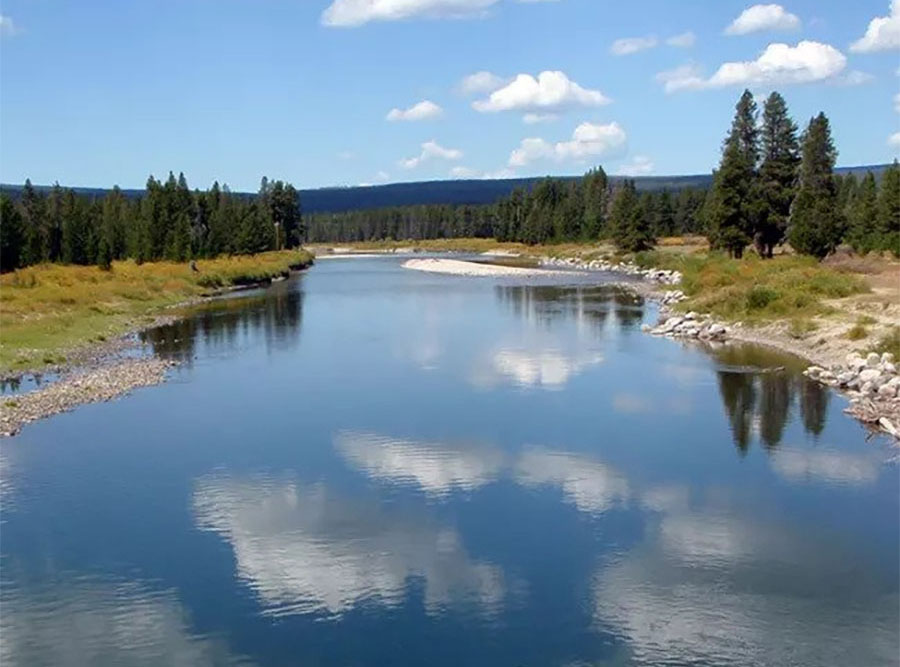
Below the Heart River confluence, the Snake River flows through a large meadow for several miles before entering a canyon that in turn exits into several more miles of meadows. The Snake River, and several of its tributaries, can be accessed from the South Boundary Trailhead at the South Entrance of Yellowstone Park.
Snake River tributaries in the area that offer decent trout fishing include Heart River (cutthroats 9-15 inches), Outlet Creek (small cutthroats), Surprise Creek (a tributary of Outlet Creek), Wolverine Creek (cutthroats 8-12 inches), Red Creek, and several other small streams (Crawfish Creek, Moose Creek, Polcate Creek and Shoshone Creek).
Fish species found in the Snake River include Yellowstone Cutthroat Trout, Snake River fine-spotted cutthroat trout, Mountain Whitefish, Utah Chub, Utah Sucker, and Mottled Sculpin.
Falls River
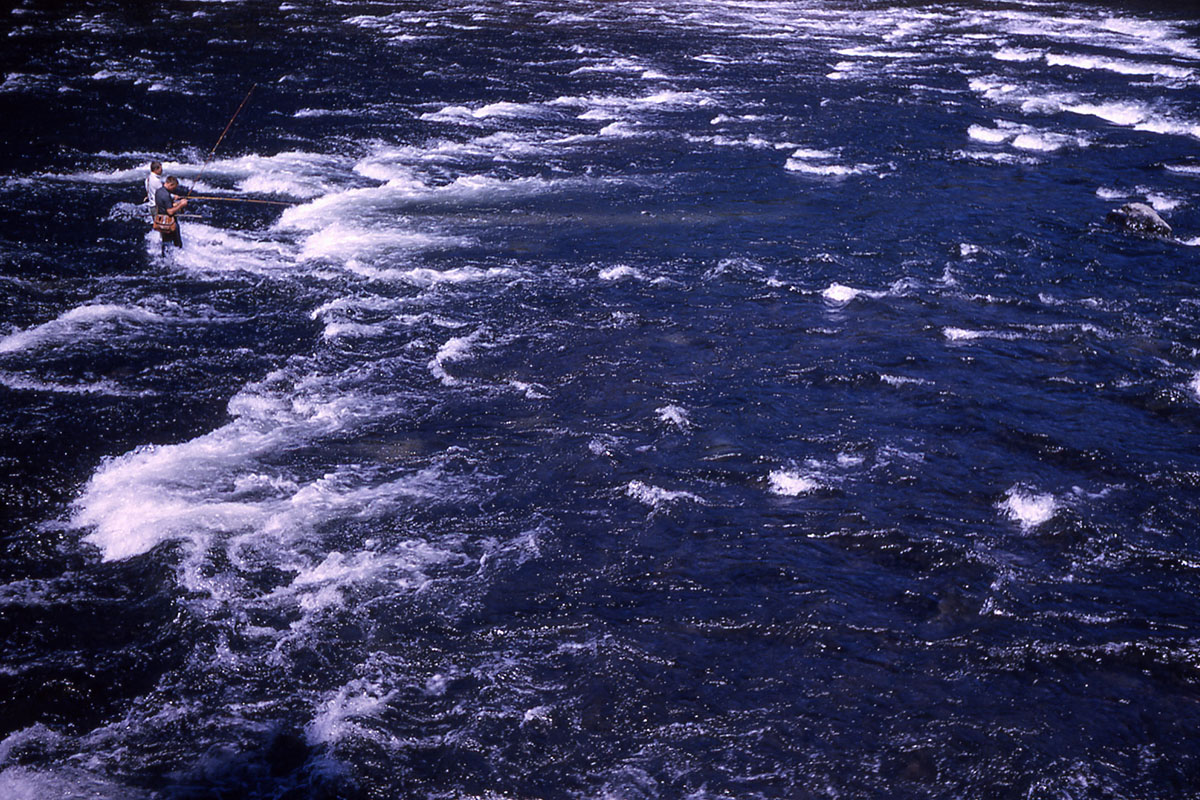
Falls River is accessible from Cave Falls Road and Ashton-Flagg Ranch Road out of Ashton, Idaho. Take Ashton-Flagg Ranch Road then turn left onto Cave Falls Road and follow it until it ends at Cave Falls Trailhead. From here you’ll need to cross Bechler River to arrive at Falls River—which is only possible when the water level is low. Alternatively, the upper portion of Falls River can be accessed by taking Ashton-Flagg Ranch Road (20 miles) to Fish Lake Road. Then take Fish Lake Road 2 miles to Fish Lake. From here take the Southern Boundary Trail to Falls River.
East Fork Specimen Creek

To reach specimen creek take the Specimen Creek Trail from Highway 191 north of the town of West Yellowstone.
Grayling Creek
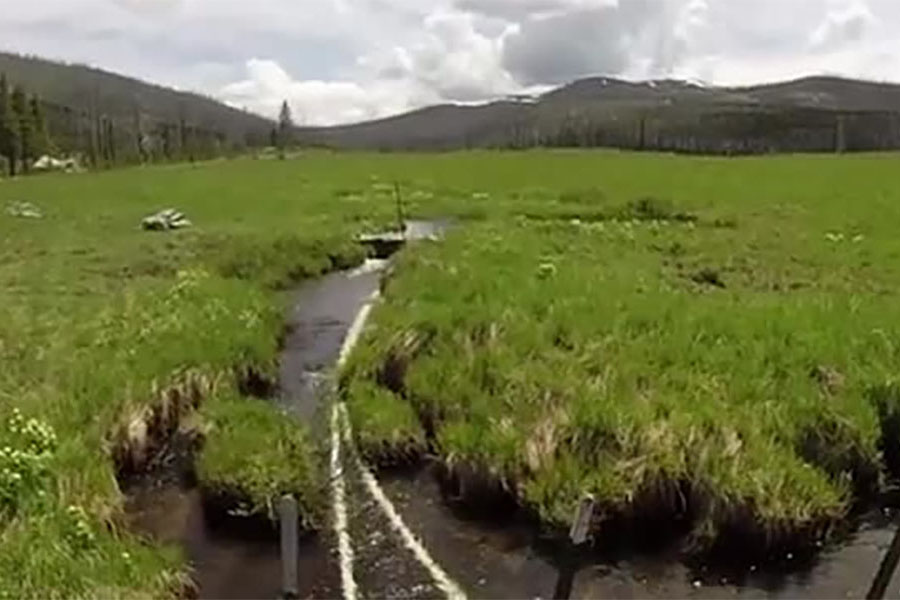
Grayling Creek runs parallel to Highway 191 for several miles providing a number of access points just off the highway. The upper portion of the creek is accessible on Highway 191 about 18 miles north of the town of West Yellowstone. Here you’ll find a pullout that provides parking and easy access for fishing.
Another popular fishing spot is the Grayling Creek Bridge on Highway 191, just 10 miles north of West Yellowstone. There are various spots along the highway where you can pull off to fish Grayling Creek.
Sometimes when Gallatin River is really crowded I’ll opt to fish Grayling Creek which usually experiences less fishing pressure.
Madison River
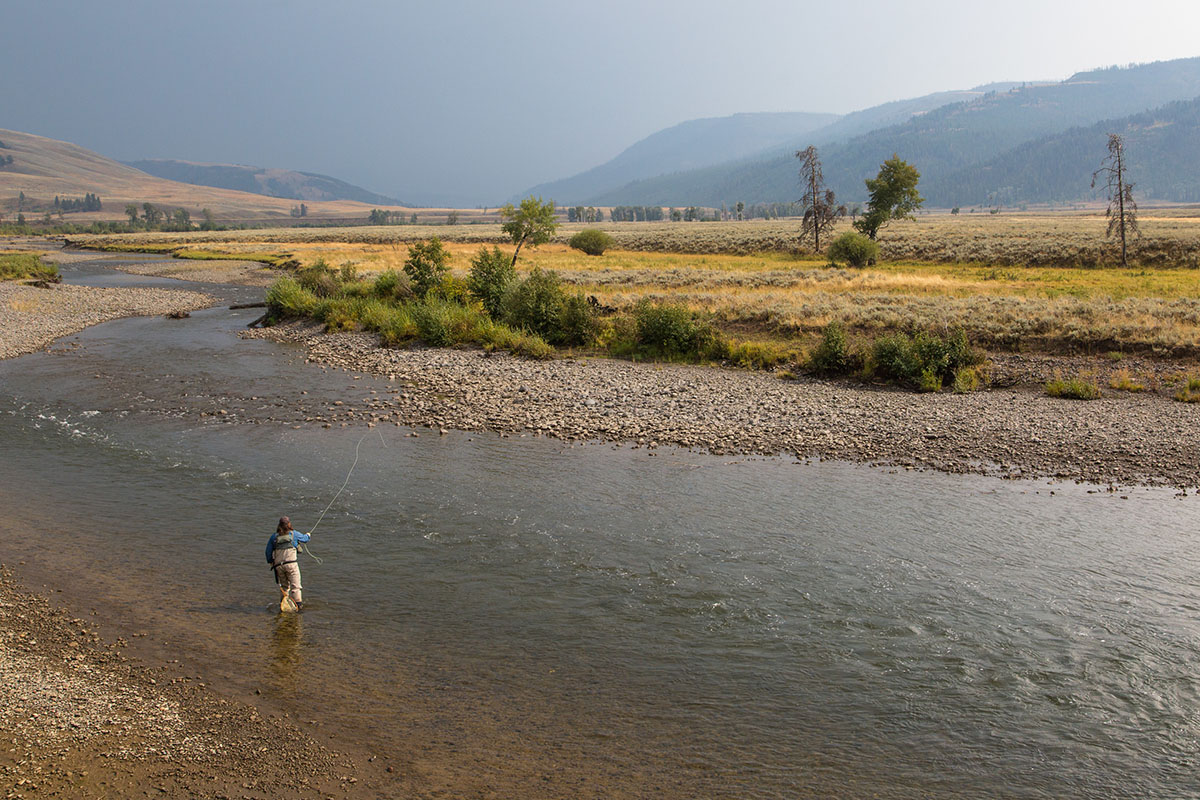
The Madison River forms at the confluence of the Gibbon and Firehole Rivers (aka Madison Junction). From Madison Junction, Madison River runs west 14 miles parallel to Highway 191 until it reaches Yellowstone Park’s west boundary. This stretch of the river provides easy access for fishing. Even though the river is accessible, it takes an experienced angler and a lot of patiences to get a bit along this stretch of the Madison.
Fishing improves along the 9 miles of river from Elk Meadow to Riverside Drive but requires that anglers achieve a drag-free float to maneuver the currents and weeds. Along this stretch mayfly hatches including Baetis, Gray Drakes, Pale Morning Duns, and Tricos drive hungry trout to the surface to feed. Salmonflies are commonplace but hatches vary from one section of the river to the next. During later summer and early fall terrestrial insects become a larger part of trout diet and imitations become very effective from Elk Meadow to Big Bend, downstream to Riverside Drive.
For several miles directly below Riverside Drive the character of the river changes once again, the river becomes shallow, and fishing becomes less productive. As Madison River continues to Yellowstones West Entrance fishing picks up near Barns Pools. On the north side of Highway 191, a half mile from the park’s west entrance their is a dirt road you can follow to Barns Pools. At the end of the road you’ll find several fishing holes known as Hole #1, Hole #2, Hole #3 and Cable Car Run. Holes #1 and #3 are downstream from Barns Pools. Hole #2 is right at the end of the dirt road as you arrive. Holes #1 and #3 are just downstream from Hole #2. Cable Car Run is just upstream. Here you’ll find deep pools and undercut banks with pockets of trout and mountain whitefish.
Fall is a great time to fish the western reaches of Madison River as spawning trout enter the river from Hebgen Lake to the west. The spawning trout are typically larger than their upstream kin and it requires larger tackle to reel them in. A trout in the 5 pound range is not unheard of. I recommend a large rod, large tippets, large streamers and big nymphs in various patterns if you plan on fishing this stretch of the Madison River. Bears here are common, so make your presence known and bring bear spray.
Firehole River
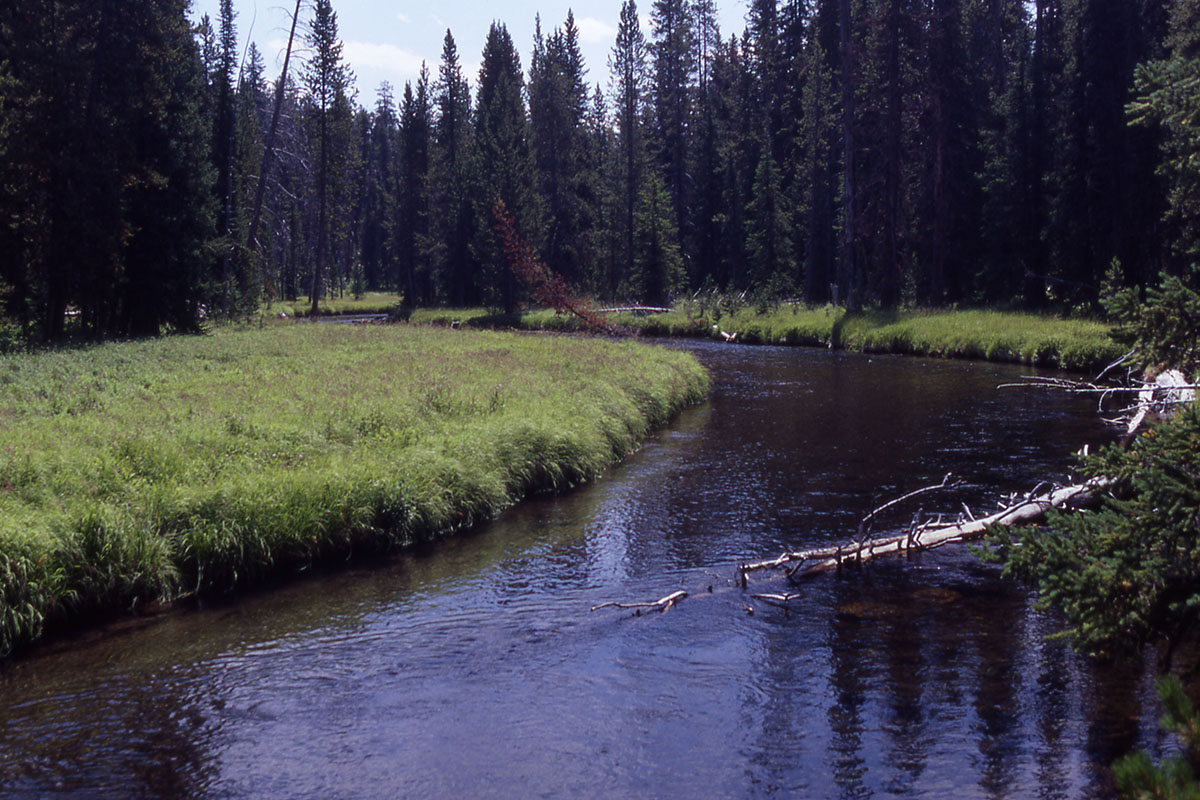
Fishing Firehole River is best during the early spring and late fall. Due to its thermally heated water, the river becomes too warm for trout fishing during the hot summer months. Dry fly fishing is the most effective fishing method.
The 10 miles from where Firehole River runs under Grand Loop Road down to Firehole Falls provides some of the best fishing along river. This stretch of the river runs parallel to Highway 191 and is easily accessible from the road. Below Firehole Falls there is only about a mile of fishable river just before Firehole River meets the Gibbon River to become the Madison River. This mile long stretch is great to fish during fall trout runs from Montana’s Hebgen Lake. This section of the river can be reached via Firehole Falls Drive just south of Madison Junction.
There are numerous Pale Morning Dun, Salmonfly and caddis hatches, along with terrestrial insects, along Firehole River. Try to match the hatch using #14, #16 and #18 dry flies. Behind your dry flies I recommend fishing an emerger pattern. The best technique for fishing Firehole is to cast your fly across the river toward the far bank and then let the current carry the fly downstream and then back across the current toward you. Once the fly stops downstream from your position, real it in.
Little Firehole River
Little Firehole River is a tributary to the Firehole River. Iron Spring Creek in turn feeds into Little Firehole River nearly at the same spot Little Firehole River feeds into Firehole River. Little Firehole River is home to brook, brown, rainbow and cutthroat trout. During the summer months larger trout from Firehole River move into the cooler water of Little Firehole River to seek refuge from the heat.
Gardner River
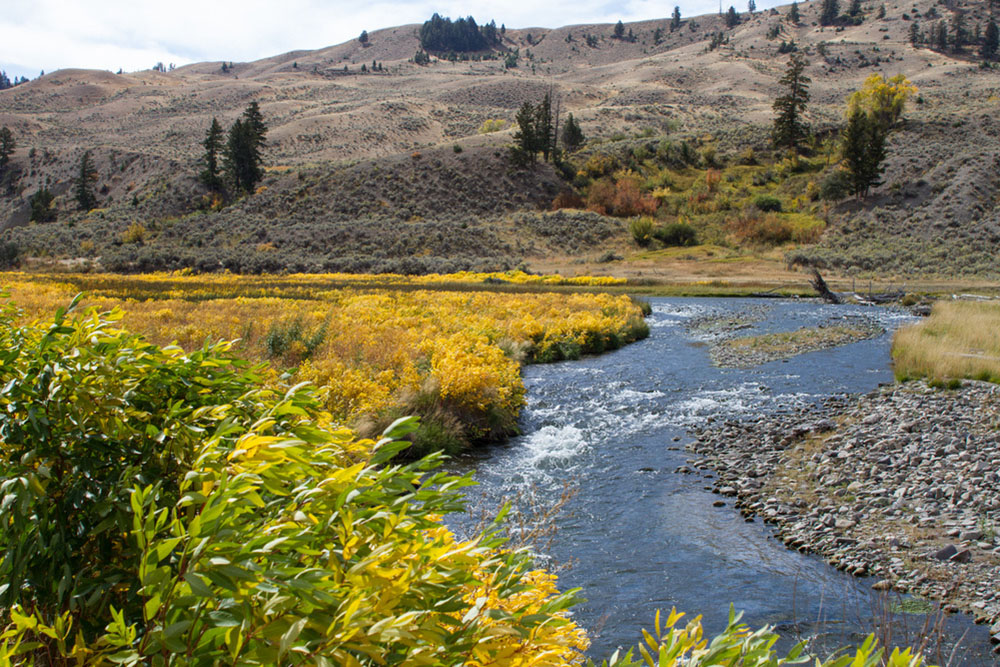
The lower (northern) section of Gardner River is more suited to serious anglers and fly fisherman. Top fishing spots along this section of Gardner River include the waters east of the Norris-Mammoth Bridge near Sheepeater Cliffs where fisherman will find brook trout up to 10 inches. The next popular fishing spot is below Osprey Falls just upstream from the Tower Bridge. It accessible via the Mammoth-Tower Road.
Downstream from Tower Bridge the river enters Gardner Canyon. This section of the river is typical canyon land with boulders, riffles, and runs. There is a nice stretch of Gardner Canyon that is accessible via a trail located behind Yellowstone School about midway down the canyon. It’s just an easy 3-mile hike from the beginning of the trail to Gardner River and the fishing is great. Here you’ll find brooks, browns, rainbows, cutbows, mountain whitefish and a few longnose suckers. Trout along this stretch can reach 12 inches or more.
Fishing along lower Gardner River is best in late summer, fall and early October. Native terrestials including grasshoppers, beetles and crickets are plentiful and bring trout to the surface to feed. During October giant brown trout are easy to target as they migrate from Yellowstone River into Gardner River. Fishing with nymphs, streamers, mayfly patterns and terrestrial and dry attractors are ideal for fishing for browns during their fall run.
Middle Creek
Middle Creek, also known as Middle River, enters Yellowstone from the park’s western boundary and flows east before joining the North Fork of the Shoshone River about 5 miles inside.
The majority of the trout in Middle Creek are average size cutthroat in the 8 to 12 inch range. The creek also has a healthy population of brook trout near its headwaters, and if you’re lucky you’ll see an occassional brown.
The fishing season gets underway in late spring and early summer. The best time to fish Middle Creek is mid-summer during July. Middle Creek is accessible from East Entrance Road just inside the park’s east entrance. The road follows the stream for several miles and provides easy access to the creek from the highway or via a short hike.
Relative to other fishing streams in Yellowstone, Middle Creek has low fishing pressure. Middle Creek is a secluded stream with lots of trout to be had. This is grizzly territory so don’t forget your bear spray.
Slough Creek
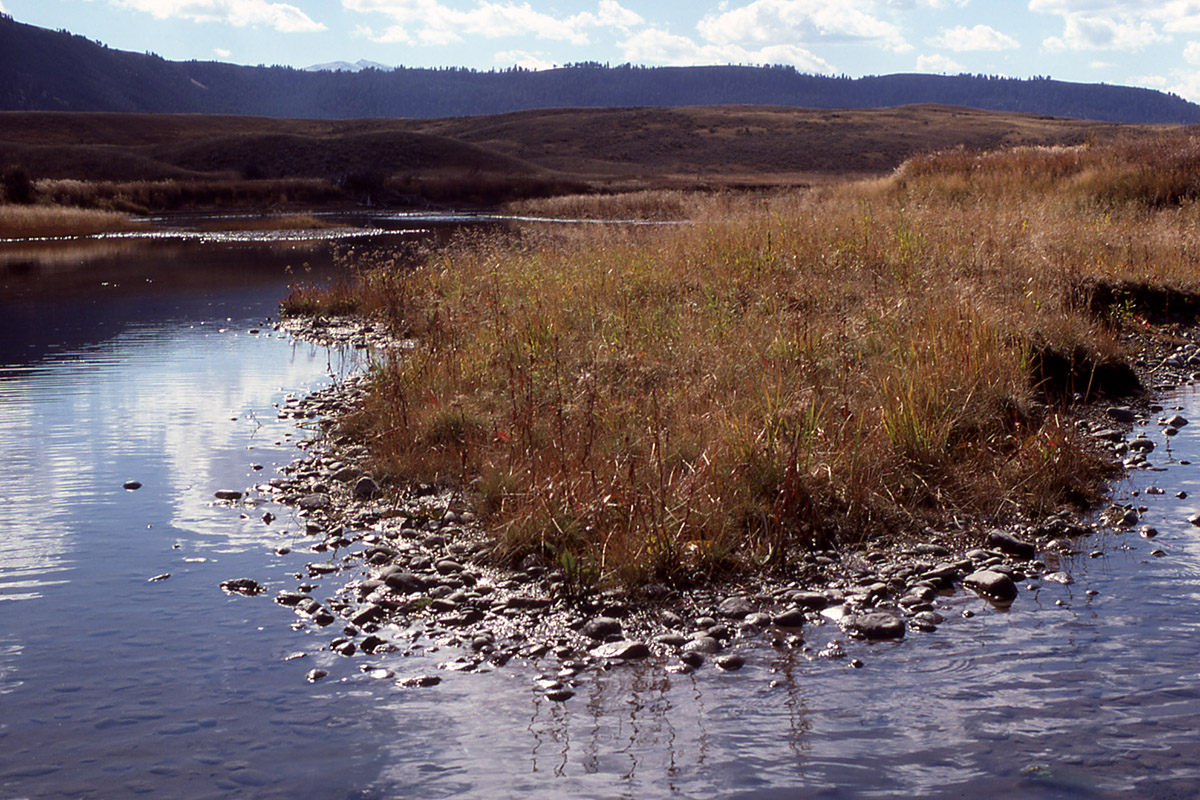
One of the most popular fishing access points is the Slough Creek campground via the campground road. The creek can also be fished from three meadows located upstream from the campground. It’s a one hour hike to the first meadow, but well worth the effort. To reach the upstream portion of Slough Creek, its best take the trailhead for the upper meadows that is accessible in the parking area before reaching the campground. This parking area is also the access point to the private Silver Tip Ranch. All three meadows have cutthroat and rainbows. For the first meadow you’ll need to match the hatch, but for the second two matching the hatch isn’t as important.
Directly below Slough Creek campground the water if perfect stonefly, Green Drake, Gray Drake and nymph habitat. During mid-summer stonefly nymphs and dry flies work well for targeting both cutthroats and rainbows. Slough Creek below the campground is larger and deeper than the upper meadows and rainbows and cuttbows tend to be a bit larger. The large insect population provides trout ample food supply though trout here they tend to be finicky eaters. They’ll often passup a fly that would easily do the trick in the upper meadows.
Gallatin River
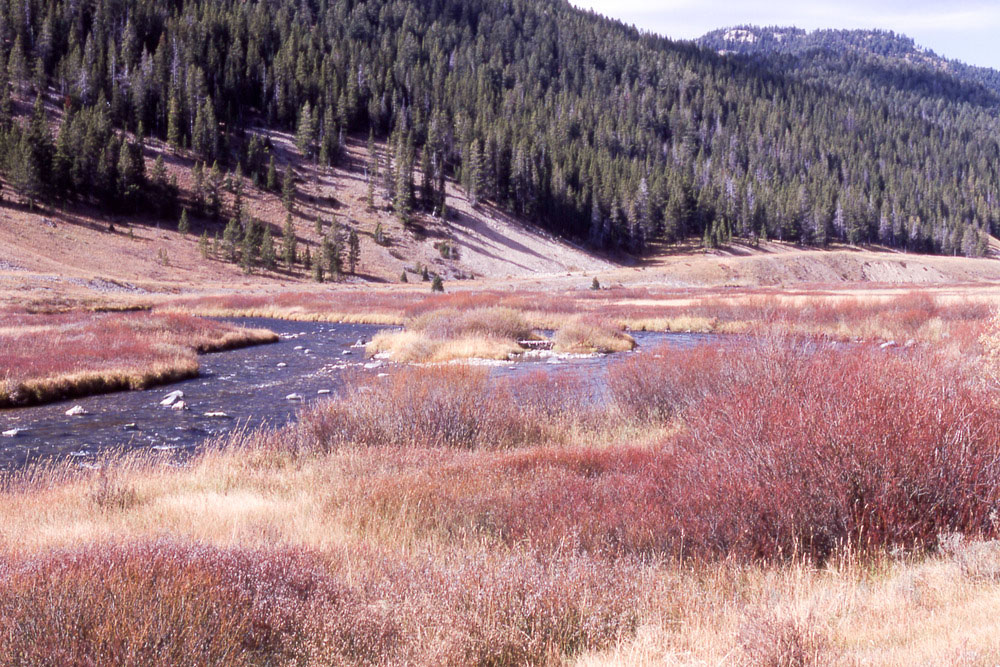
As the river approaches Highway 191, willows begin to line the banks, weed beds appear, insects can be found, and the river takes on a new character much more hospitable to fish—and fishing. In Gallantin River anglers will find brown trout, westlope cutthroat trout, rainbows, cutbows, graylings and the mountain whitefish. Trout catches over 12 inches are commonplace.
Accessing Gallantin River all the way to where it crosses the Park’s north boundary into Montana is relatively easy as it parallels Gallatin Rd (Highway 191). As you travel north along the road you’ll see mile markers indicating your location. The river appears to the east at about mile marker 20 and remains in Yellowstone Park for the next 11 miles. This section of the river is home to larger trout and almost every spots along this section of the river holds trout.
For best fishing result along the Gallatin River try to match the hatch. Hatches include Flavs, Pale Morning Duns, and Green Drakes. Caddis, mayflies and stonefly-attractor flies are also very effective.
Sentinel Creek
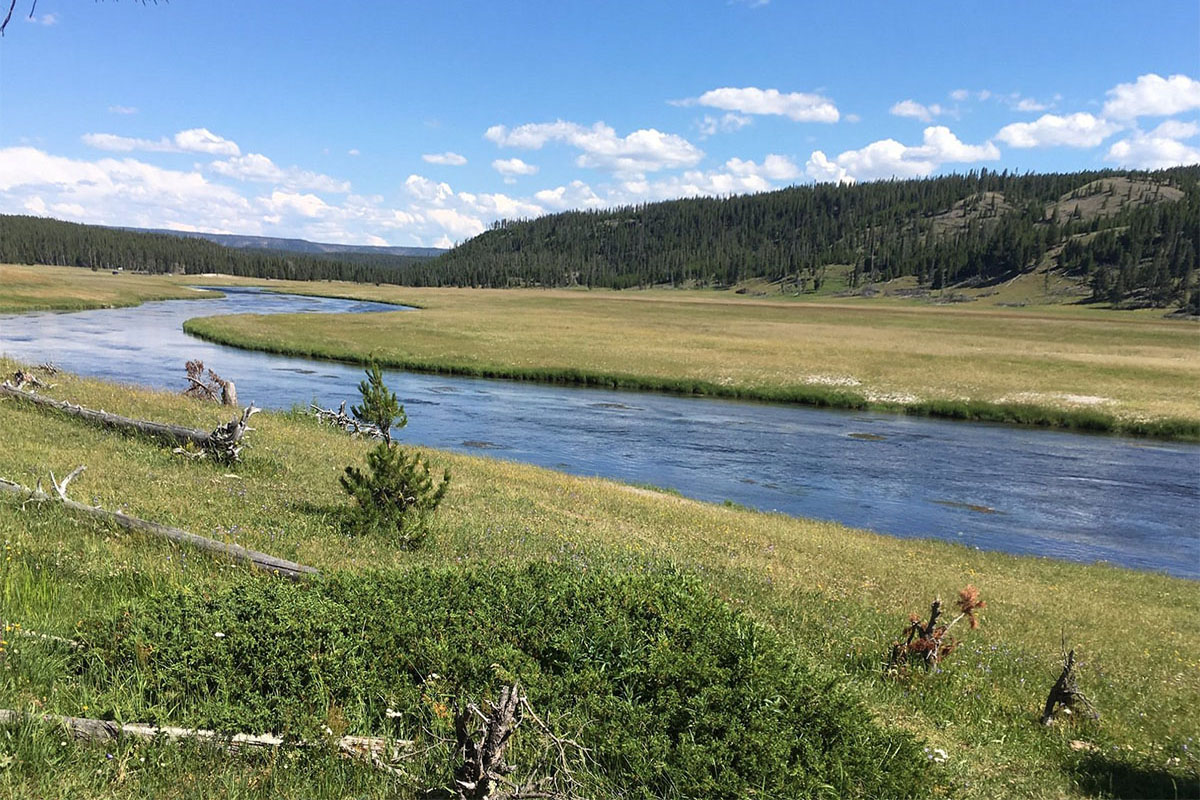
Iron Spring Creek
Iron Spring Creek is a small fishing stream in Yellowstone Park that offers excellent fishing for brown, rainbow, brook and native cutthroat trout. The creek is located in southwestern Yellowstone and acts as a feeder stream to Firehole River.
Iron Spring Creek is accessible via Biscuitt Basin or Black Sand Basin parking lots. Its confluence with Little Firehole River is just across from the Daisy Trailhead off Grand Loop Road.
Spring hatches on Iron Spring Creek and surrounding water ways include black caddis, yellow sallies, midges, blue-winged olive and PMD’s. Summer hatches include sedges, drakes and pink ladies. Fall hatches include sedges, midges, blue-singed olive, ants and grasshoppers. Match the hatch to improve your catch rate on Iron Spring Creek.
Beartooth Lake
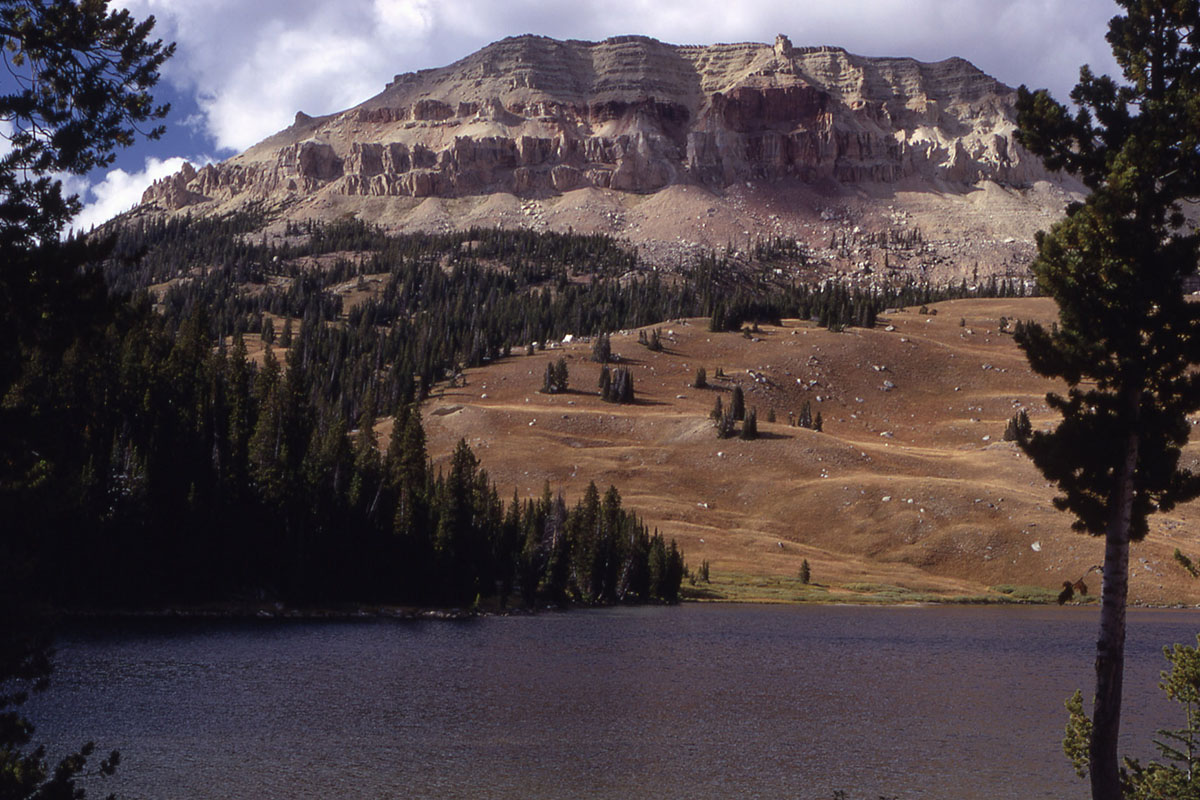
Anglers will find fish just about everyone on Beartooth Lake. However, there are few spots I’d recommend starting. Where water flows into the lake from Little Bear Creek and out of the lake again are two of the most productive fishing spots on Little Bear Creek. Here the trout just wait for an attractive fly or streamer.
Beartooth Lake is just of Highway 212 a couple miles west of its junction with Highway 296. The lake has a nice picnic area and campground.
Lily Lake
Just a stone through from Cody, Wyoming along Highway 120 is Lily Lake, an angler’s paradise that offers superb fishing for rainbow trout, brook trout and Arctic grayling. Lily Lake can be fished from shore, from a kayak, canoe or float tube. Given it’s high elevation and northern latitude the lake is covered in snow until late spring. Fishing season for Lily Lake really gets underway in early summer (June) and extends through the fall.
Midge, mayfly and caddis hatches bring hungry trout to the surface to feed during the summer months. Match the hatch and you’re sure to get a bite. I recommend trying size 16-20 palomino midges, griffis gnats or baetis emergers.
Lily Lake is easy to access. Head west out of Cody, Wyoming on Highway 120. Exit left to Highway 296. When you reach Highway 212, take a right. Follow 212 five miles to Lily Lake Road and you can’t miss it.
Bechler River
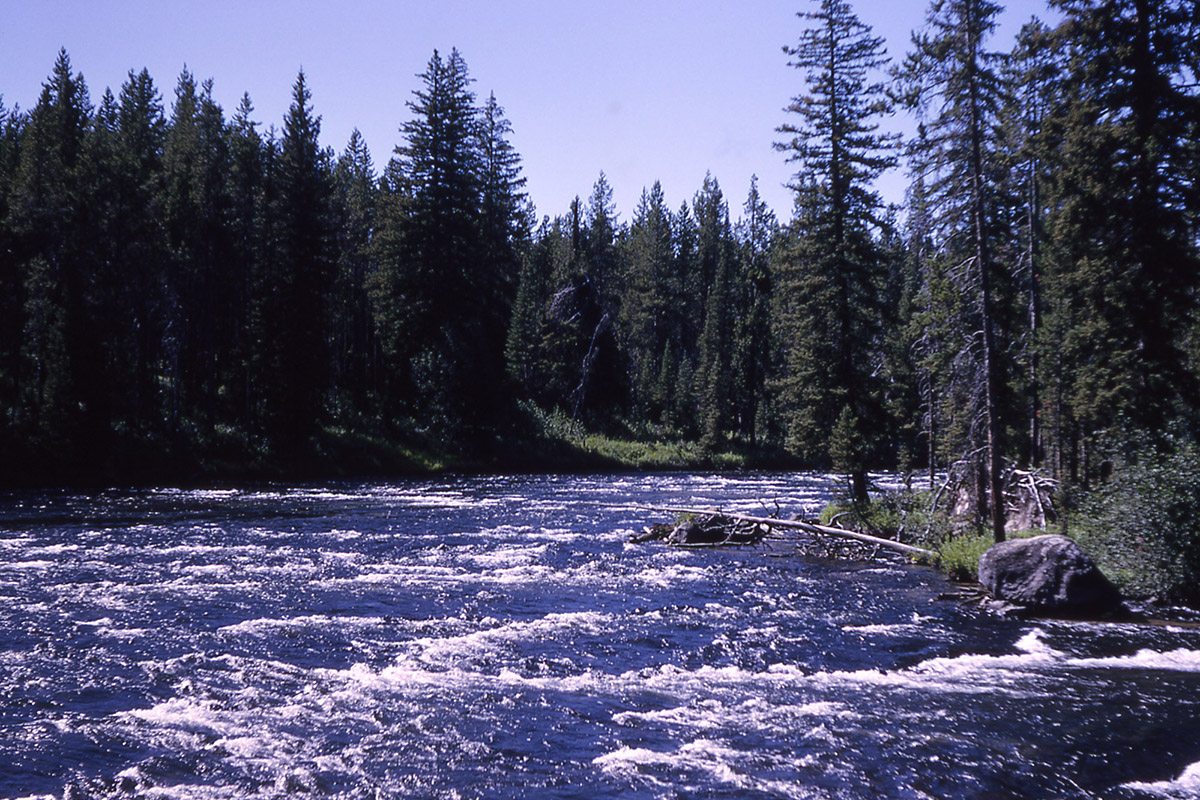
The river contains nice rainbow trout in the 10-14″ range and weighing in at up to 10 pounds, but fishing is not the main attraction. Fish are not plentiful, the structure is not ideal fish habitat, and it’s a bit of a hike to reach decent fishing spots. However, the landscape is breathtaking and if you’re both of hiker and angler, then Bechler River may be the perfect fishing trip for you. You’ll find the largest rainbows along the stretch of the river that runs through Bechler Meadows.
Fishing in Bechler River takes off in early to mid-July, when Grey Drake and Blue Winged Olive hatches are out and fish are rising to the surface to feed. There are also biting insects during this time of the year so dress appropriately and bring some good insect repellant. Fishing is spotty and it requires a keen eye to spot fish. Sight fishing is the name of the game on Bechler River. Fishing dies off toward October.
Nez Perce Creek
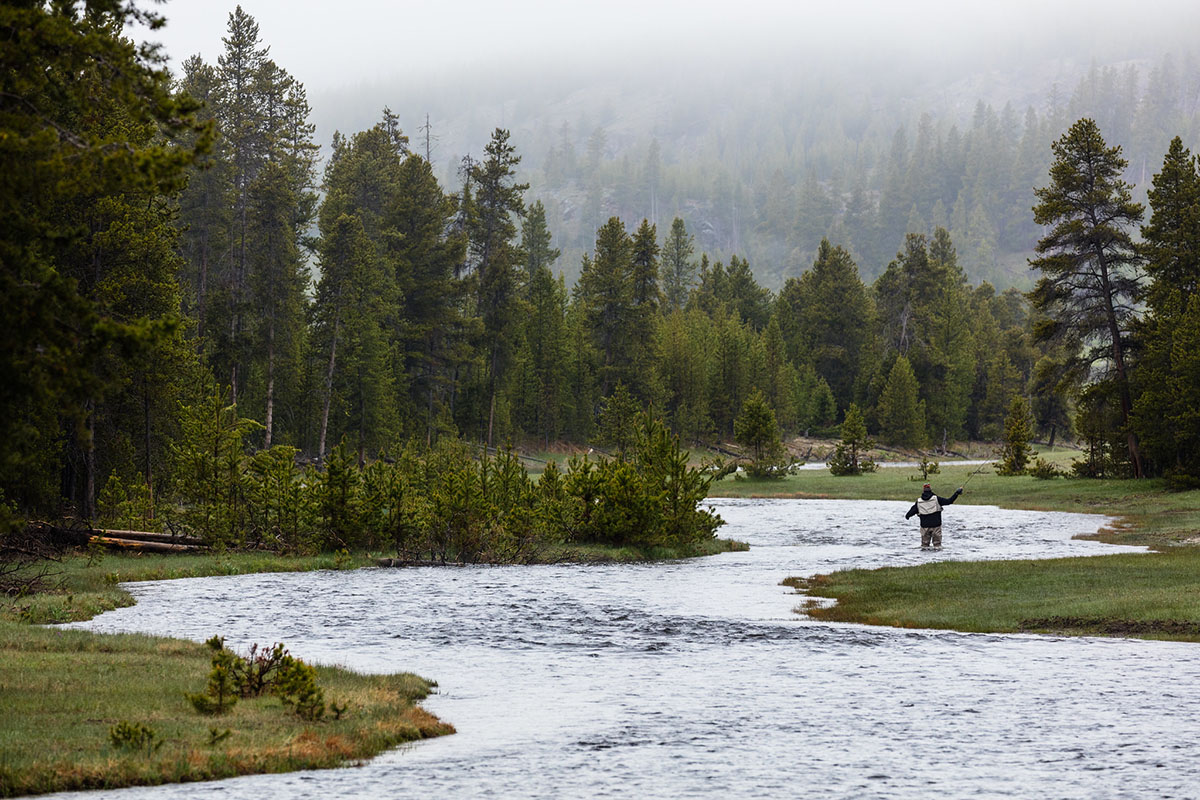
The creek is accessible along Grand Loop Road north of Old Faithful. For the best fishing access and experience, follow the Mary Mountain Trail. The Mary Mountain Trailhead is located just south of where Nez Perce Creek passes under the highway. Follow the trail a couple miles for some gorgeous scenary and great fishing. Trout along this expanse of the creek can reach up to 17 inches. Dry fly fishing works great.
Lava Creek
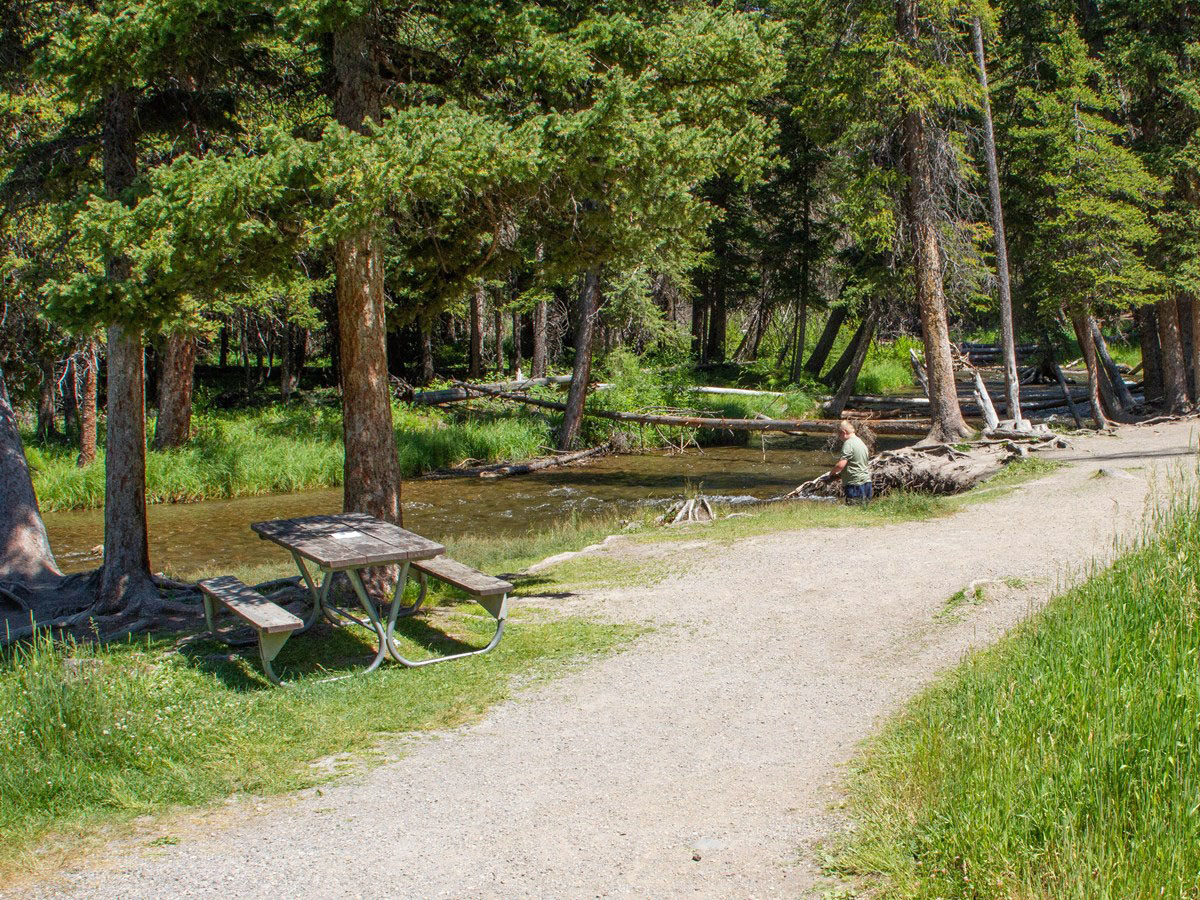
This is prime bear territory so be aware of your surroundings at all times. Bears seem to be more common north of Lava Creek picnic area.
Tower Creek
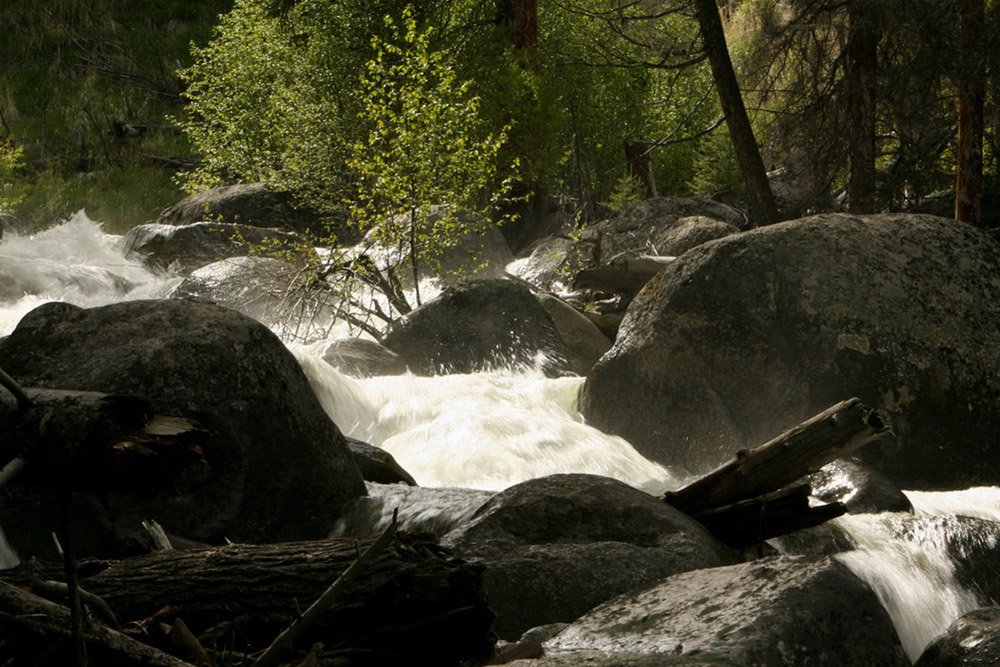
Effective flys include attractors, caddis, terrestrials and small bead head nymph patterns. Below the falls try attractor flies uch as Wulffs and Trudes. Above Tower Falls, upstream from from Towers Falls Campgroud, terrestials including grasshoppers and beetles are effective during late summer and early fall.
Obsidian Creek

Boundary Creek
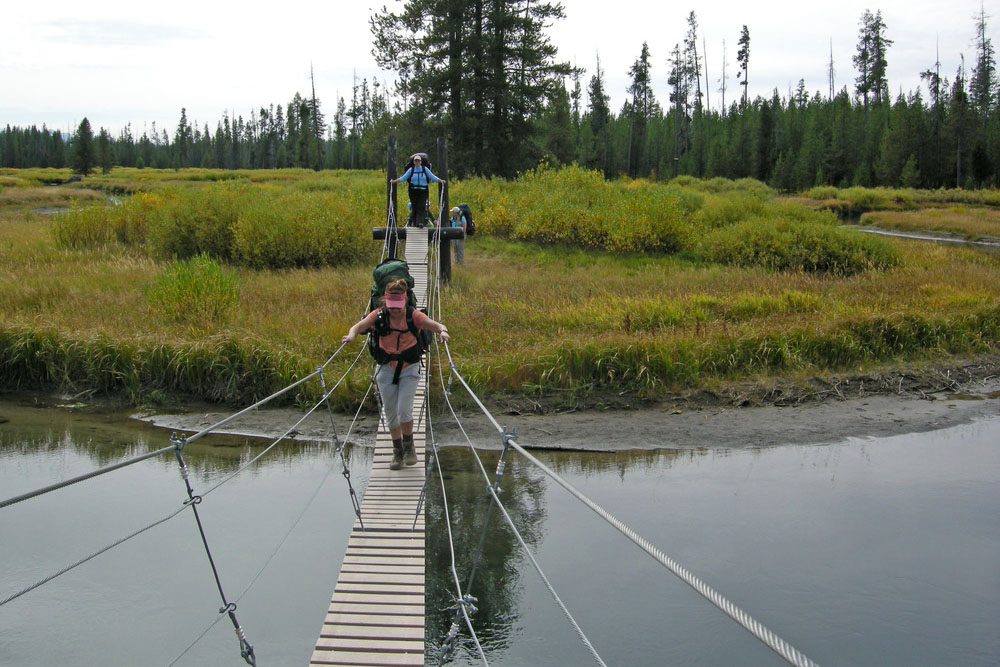
August is the most productive time to fish Boundary Creek. Cutthroats, rainbows, and cutthroat-rainbow hybrids average between 8-10″. Specimens up to 14″ are not uncommon. Hatches and insects drive hungry trout to the surface to feed. Flies with terrestrial patterns are most effective on this creek.
DeLacy Creek
DeLacy Creek is a cold water mountain stream on the north bank of Shoshone Lake. It is a small stream never more than about 10 feet wide, but it teams with brook trout. The average size of brook trout in DeLacy Creek is between 5 and 8 inches with larger specimens near the creek’s mouth at Shoshone Lake.
The best time to fish DeLacy Creek is following spring runoff. The best method for targeting brook trout is dry fly fishing using attractors (size 14), crickets (size 8-14), Hoppers (size 6), Parachute and ant patterns (size 14-18), and foam beetles (size 14). The creek has several mayfly and caddis hatches and teams with terrestrial insects. For best fishing results, try to always match the hatch.
DeLacy Creek is accessible from the DeLacy Creek Trailhead, 9 miles north of West Thumb or 9 miles south of Old Faithfulfrom the pullout on the Grand Look Road. The trail runs parallel to DeLacy Creek from the trailhead to Shoshone Lake providing anglers several access points for fishing.
Beula Lake
Beula Lake is a medium size 107-acre lake situated between Falls and Lewis Rivers near the south boundary of Yellowstone Park. Beula Lake serves as the headwater of Falls River to the west. The lake offers fishing for cutthroat trout that can reach over 12 inches. Anglers can fish from shore or float tube. Fishing from float tube is a popular options on Beula Lake as the shoreline can be difficult to navigate.
To access Beula Lake, drive west 9 miles on reclamation road from Flagg Ranch. Flagg Ranch is just 2 miles south of the South Yellowstone Entrance. You’ll find the trailhead to Beula Lake off Grassy Lake Road. The trail from Grassy Lake Road to Beula Lake is 2 and half miles.
Summer hatches of mayflies, midges, caddis and Callibaetis draw trout to the surface to feed. For fly fishing try to match the hatch. For subsurface fishing I recommend using dragonfly, leech, and damselfly patterns.
Upper Pelican Creek
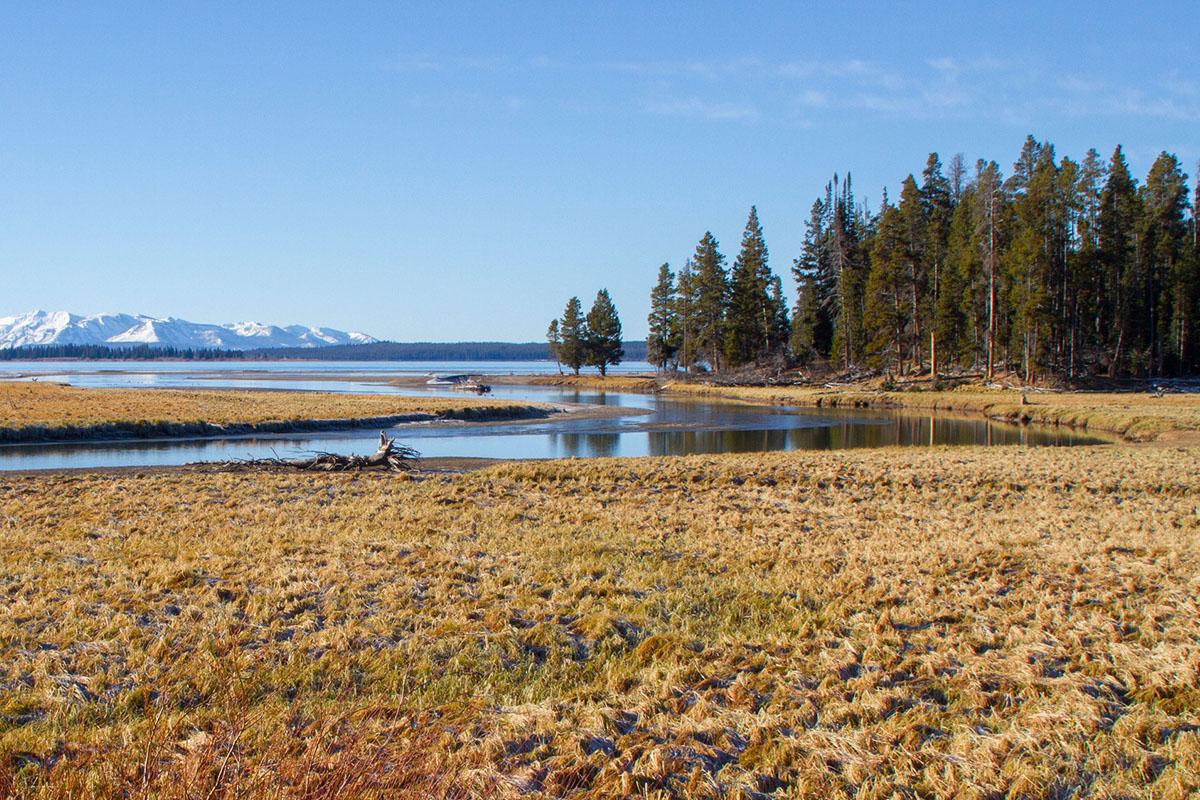
To access upper Pelican Creek, first find the Pelican Creek trailhead located 3 miles east of Fishing Bridge. You’ll find the trailhead down the access road at Fishing Bridge-East Entrance Highway. Follow the Pelican Creek Trail northeast 2 miles to Pelican Valley. From here you can fish the upper Pelican Creek without restriction. Flys and terrestrials tend to be most effective for targeting trout along this region of the creek. Cutthroats average over 12″.
Broad Creek
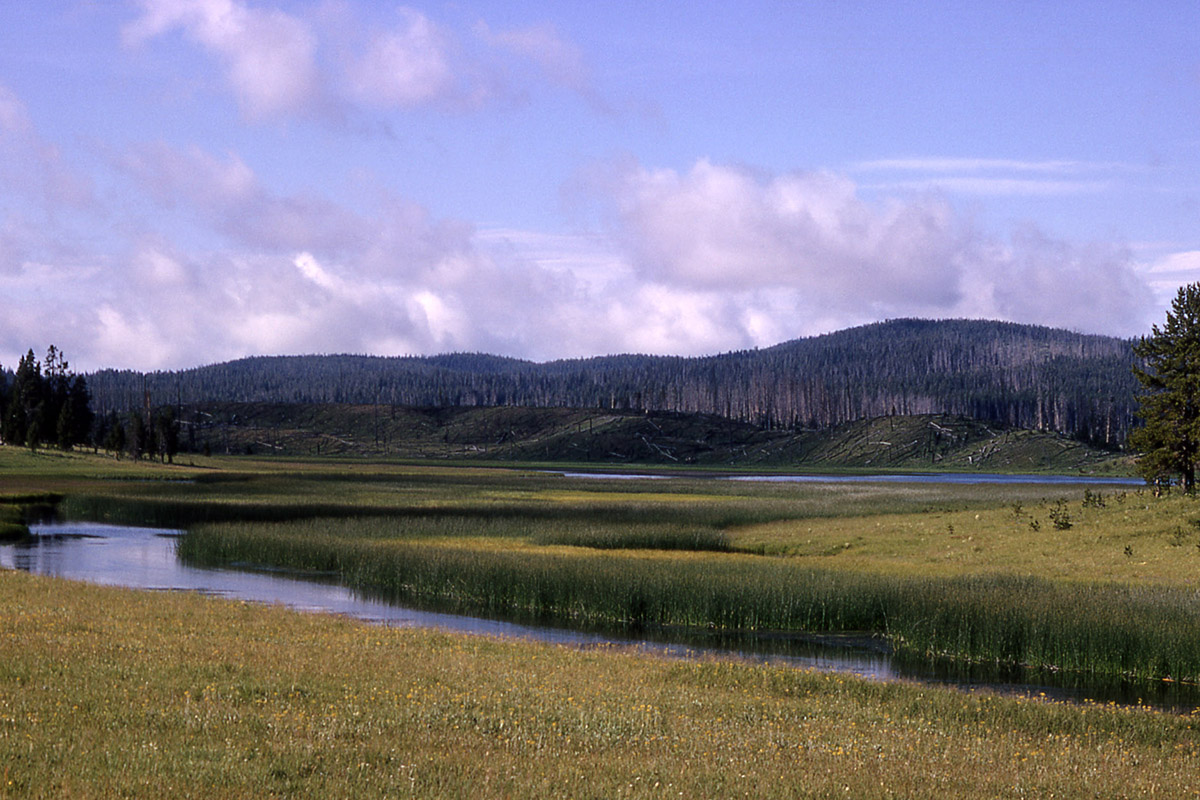
Cache Creek
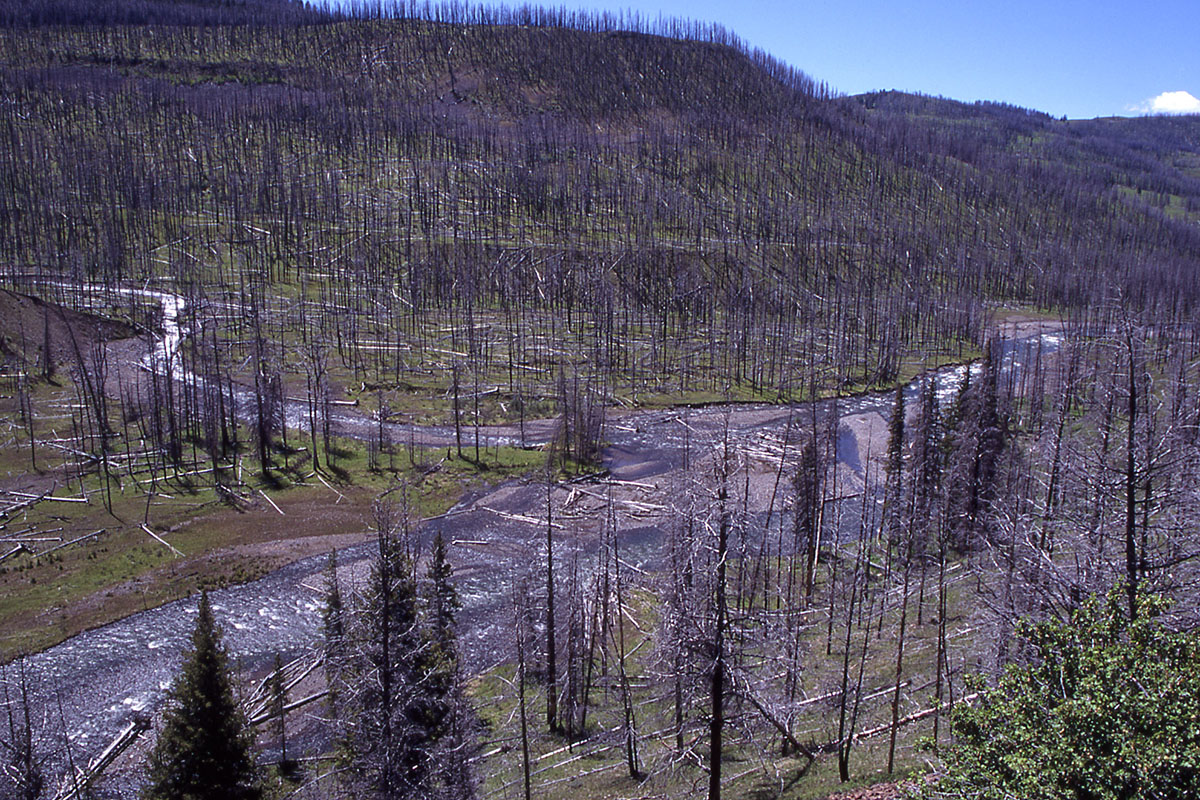
Cache Creek is accessed via the Lamar River Trail located 14 miles from Yellowstone Park’s Northeast Entrance Highway not far from Soda Butte. The lower region of Cash Creek is reached by following the Lamar River Trail south for a little over 3 miles. If you want to fish upstream, take the Cache Creek Trail and follow it for about 4 miles before reaching the creek.
Cottonwood Creek
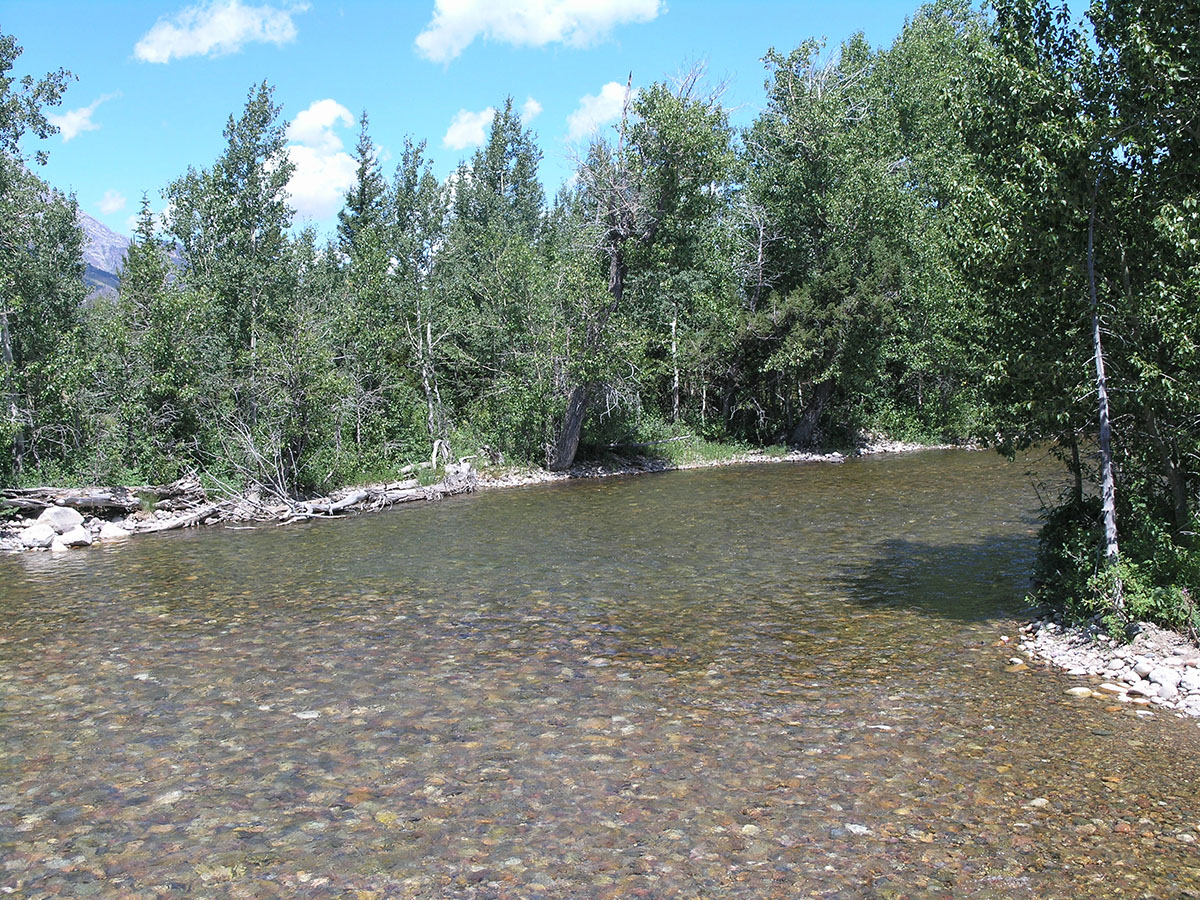
Hellroaring Creek
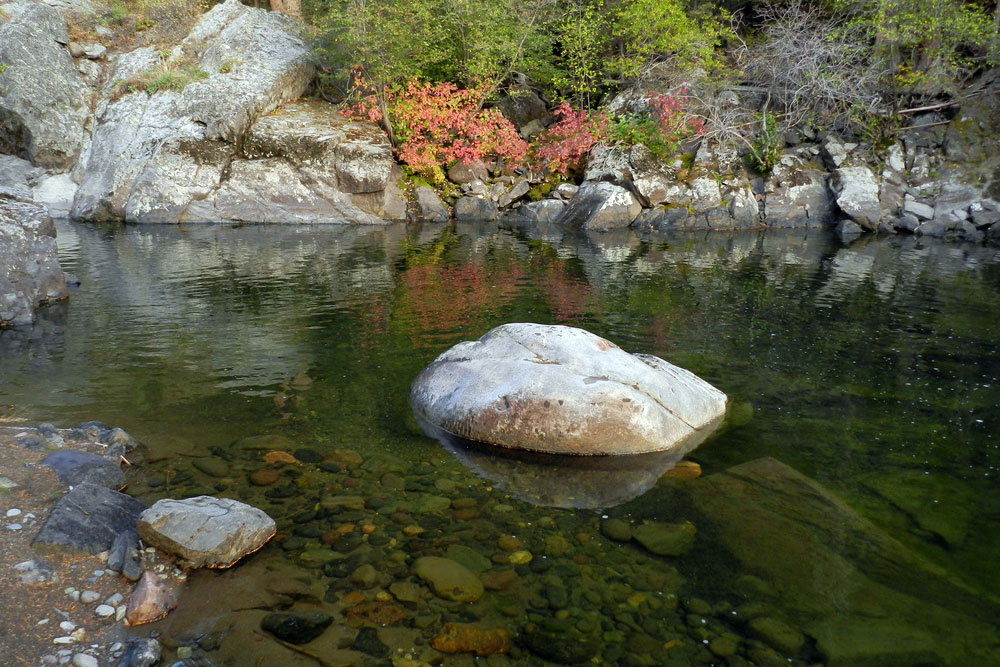
The creek is accessible via the Hellroaring Creek Trail located 2 miles west of Tower Junction off Mammoth-Tower Highway. Follow the trail downhill, crossing over the Yellowstone River suspension bridge, and continue another 6 miles to Hellroaring Creek. Accessing the creek is a bit of a hike, but well worth it if you want great fishing, scenery and solitude.
Pebble Creek
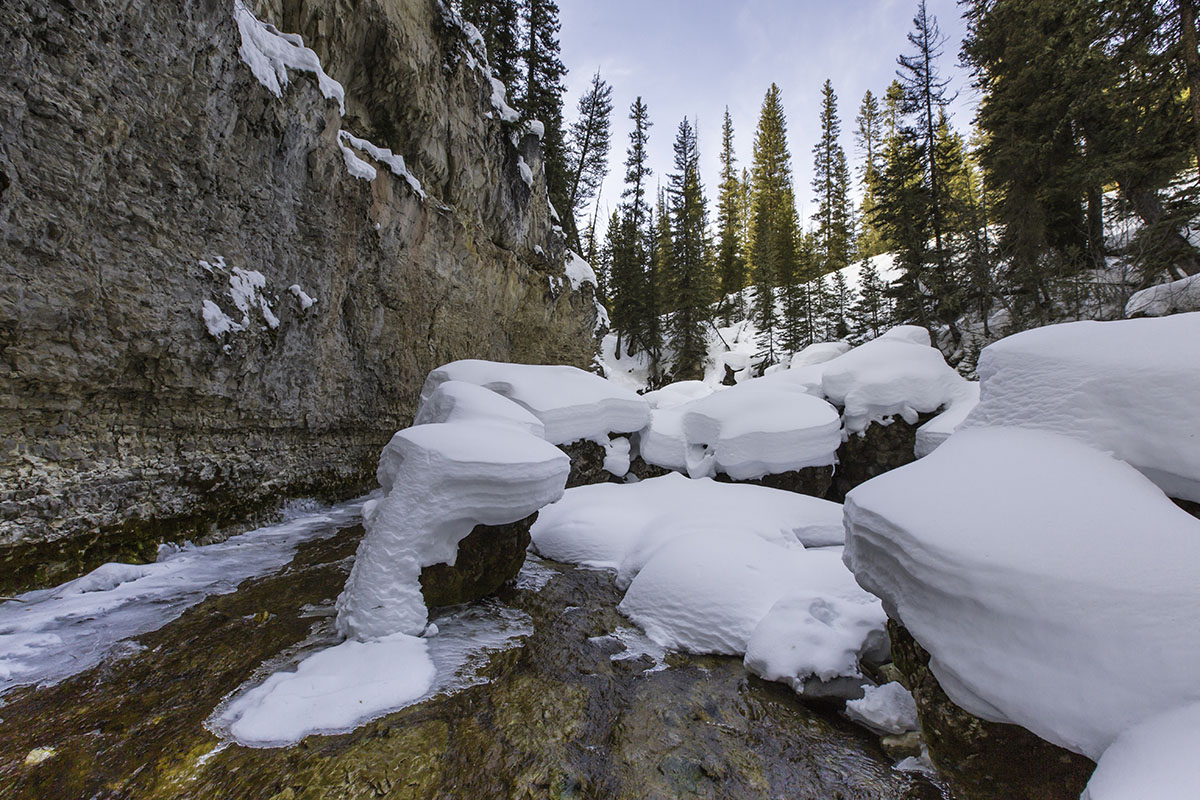
A popular fishing spot is the upper meadows of Pebble Creek. This area is accessed from the Pebble Creek Trail’s north trailhead which is located a few miles south of Yellowstone Northeast Entrance, on the Northeast Entrance Highway. Once on the trail follow it northwest a couple miles until you reach the upper meadows of Pebble Creek.
Blacktail Deer Creek
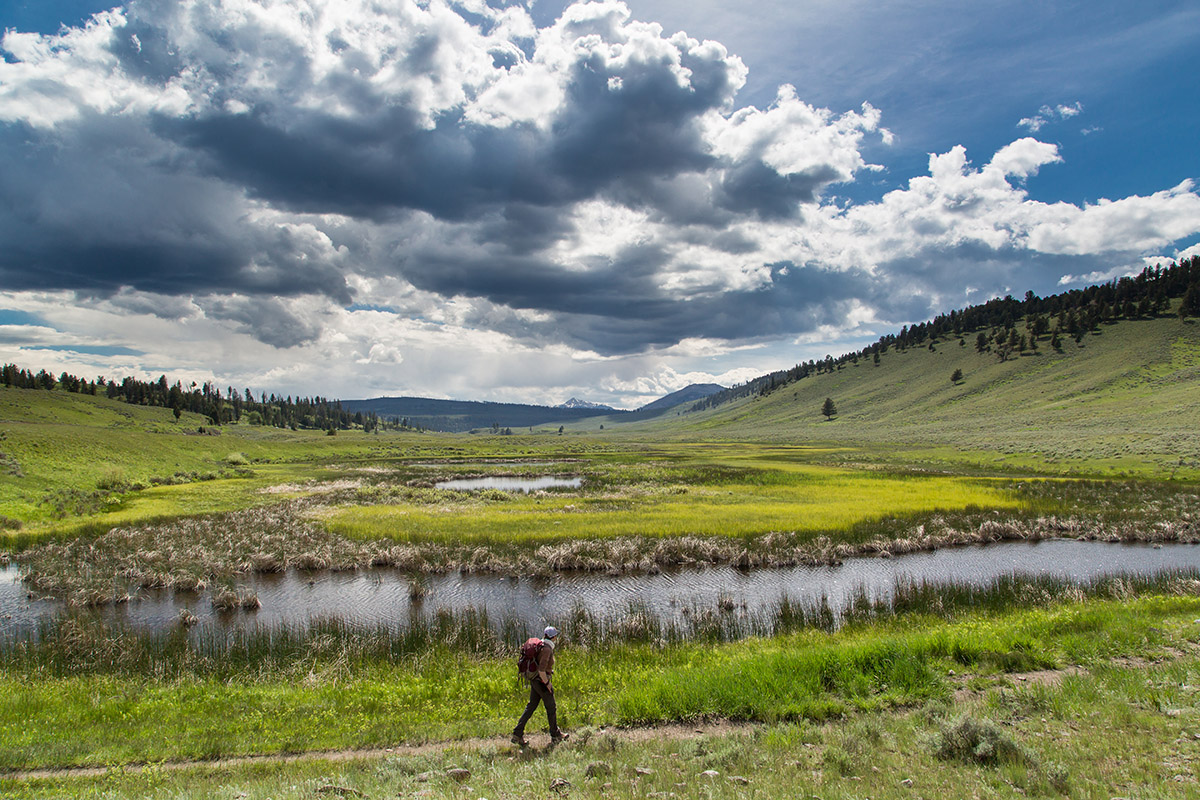
The creek is home to brook trout, brown trout, rainbow trout and mountain whitefish. Vibrant colored brook trout between 7 and 10 inches are the most common game fish found in Blacktail Deer Creek. If you’re traveling Grand Loop Road, Blacktail Deer Creek is a great little stream for a quick fish off the side of the road, although better fishing areas require a short hike.
Duck Creek
Duck Creek is a meadow stream located 7 to 8 miles north of the town of West Yellowstone. The creek is lined with grassy banks and willow trees. The creek is accessed by taking highway 191 north from West Yellowstone and then turning onto Duck Creek Road. The road will lead you to Duck Creek near the western boundary of Yellowstone Park.
Duck Creek offers anglers the opportunity to catch both brown trout and brook trout. The majority of trout will be smaller with the occassional trophy catch. Larger trout are found in Duck Creek following fall migration when spawning trout migrate from Hebgen Lake into the creek. Duck Creek has low fishing pressure most off the year.
Fan Creek
Fan Creek is a small meadow stream and tributary of the Gallatin River. It is located in the northwest corner of Yellowstone National Park, 22 miles north of West Yellowstone on Highway 191 at mile marker 22. To access Fan Creek take the Fawn Pass Trail to the Sportsman Lake Trail and then turn left on the Sportsman Lake Trail.
Fan Creek has healthy populations of brook, cutthroat and rainbow trout. The lucky angler will also catch a large brown every once in a while. The creek has caddis hatches, along with Baetis, Flavs, Pale Morning, and Green Drakes. While attractors may work to catch some trout, the fish in Fan Creek can be a bit picky. The best strategy for catching trout on Fan Creek is to match the hatch.
Soda Butte Creek
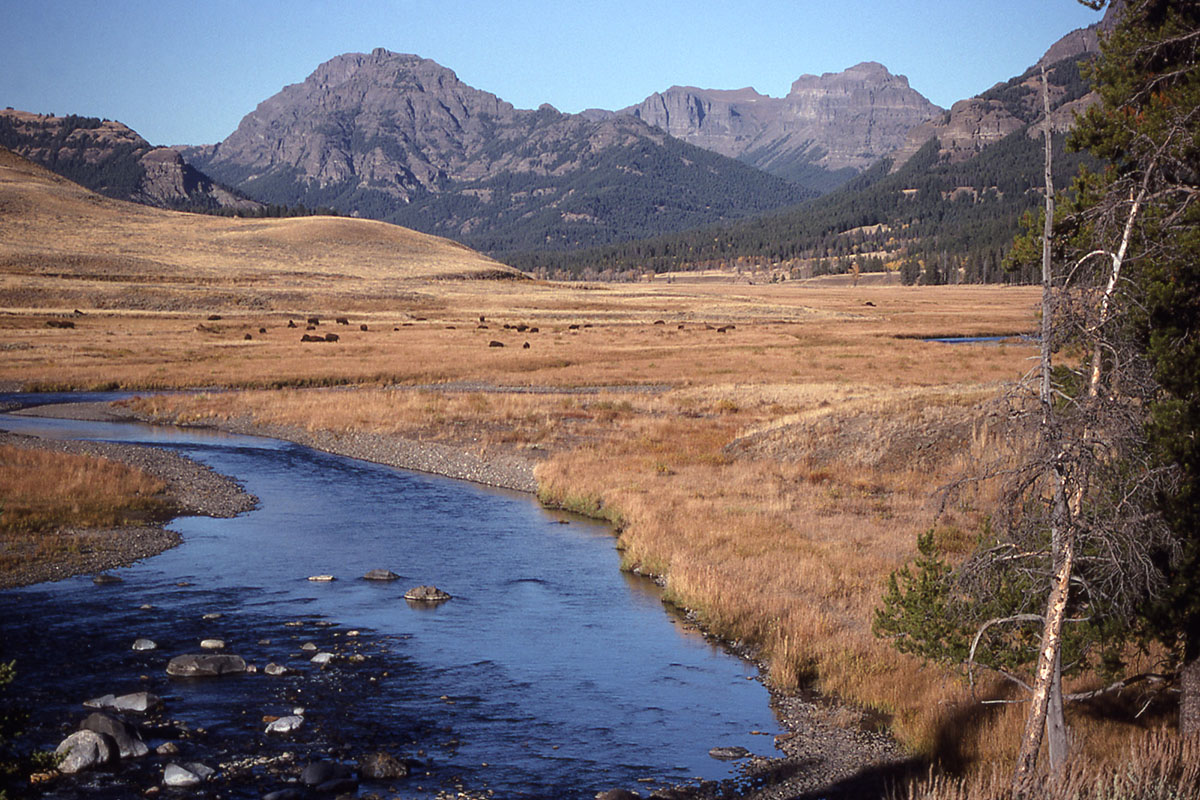
The upper region of Soda Butte is a cold water mountain stream that is home to a healthy population of rainbow and cutthroat trout that average over 10 inches. Downstream from Icebox Canyon, Soda Butte Creek gives way to rolling meadows and calmer waters that are home to larger 12 inch rainbows and cutthroats. In the lower stretch of Soda Butte Creek summer and fall hatches of Green Drakes and PMDs are common and bring trout to surface daily to feed. Here terrestrial patterns that match the hatch including native crickets, grasshoppers, and beetles are most effective.


